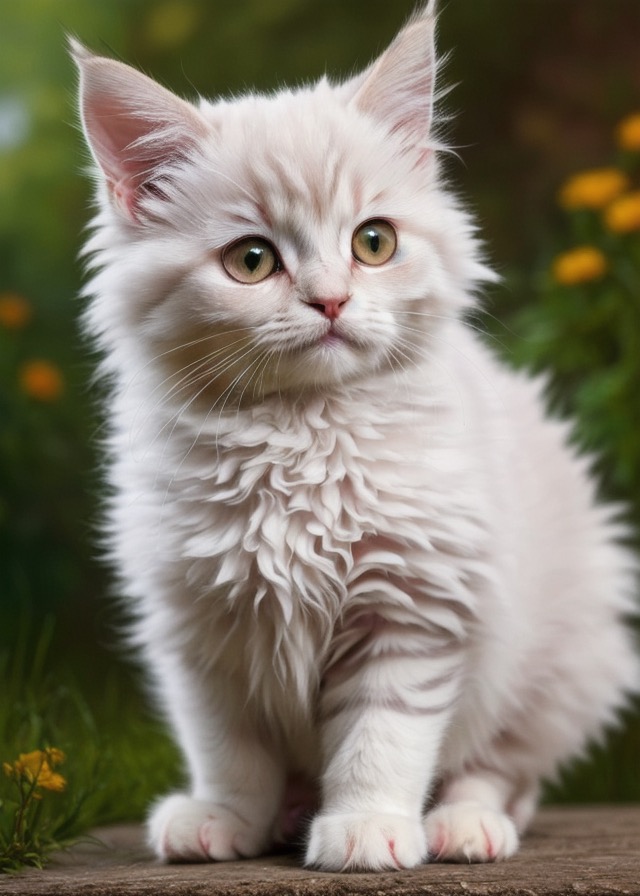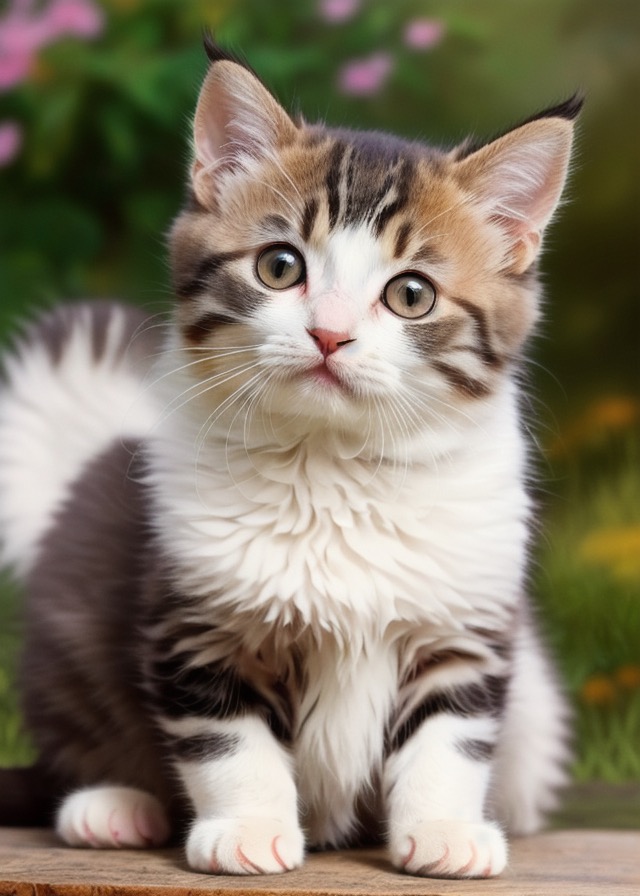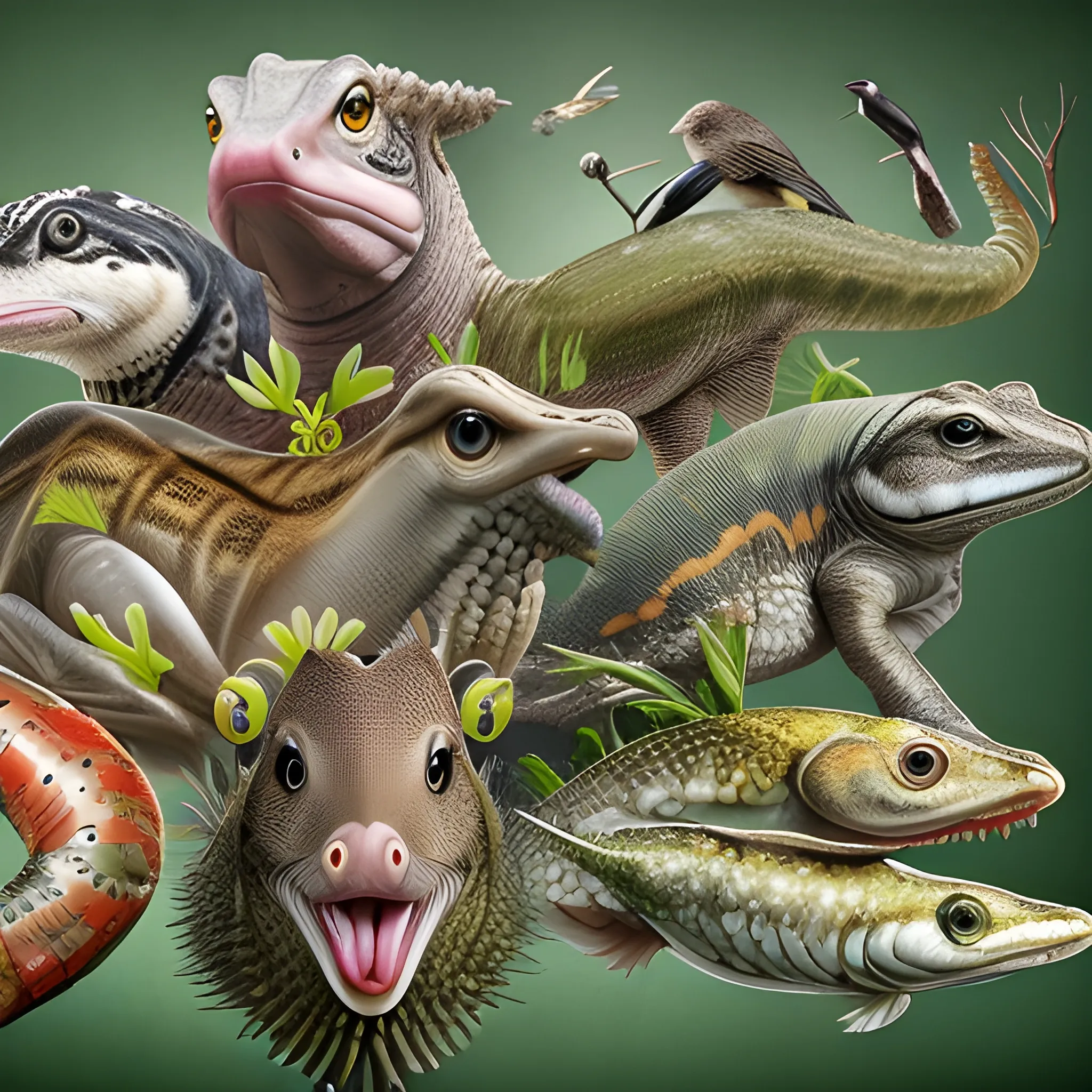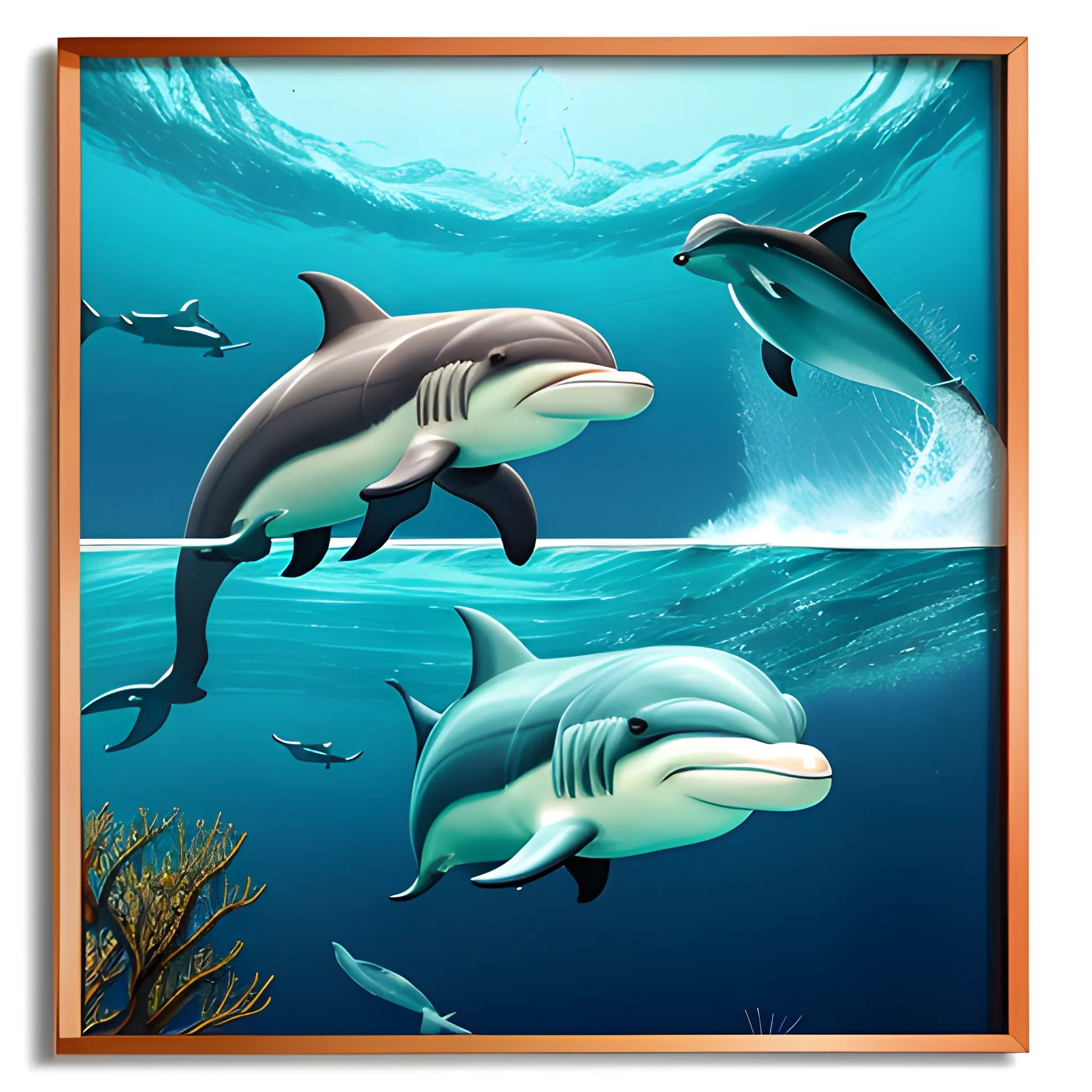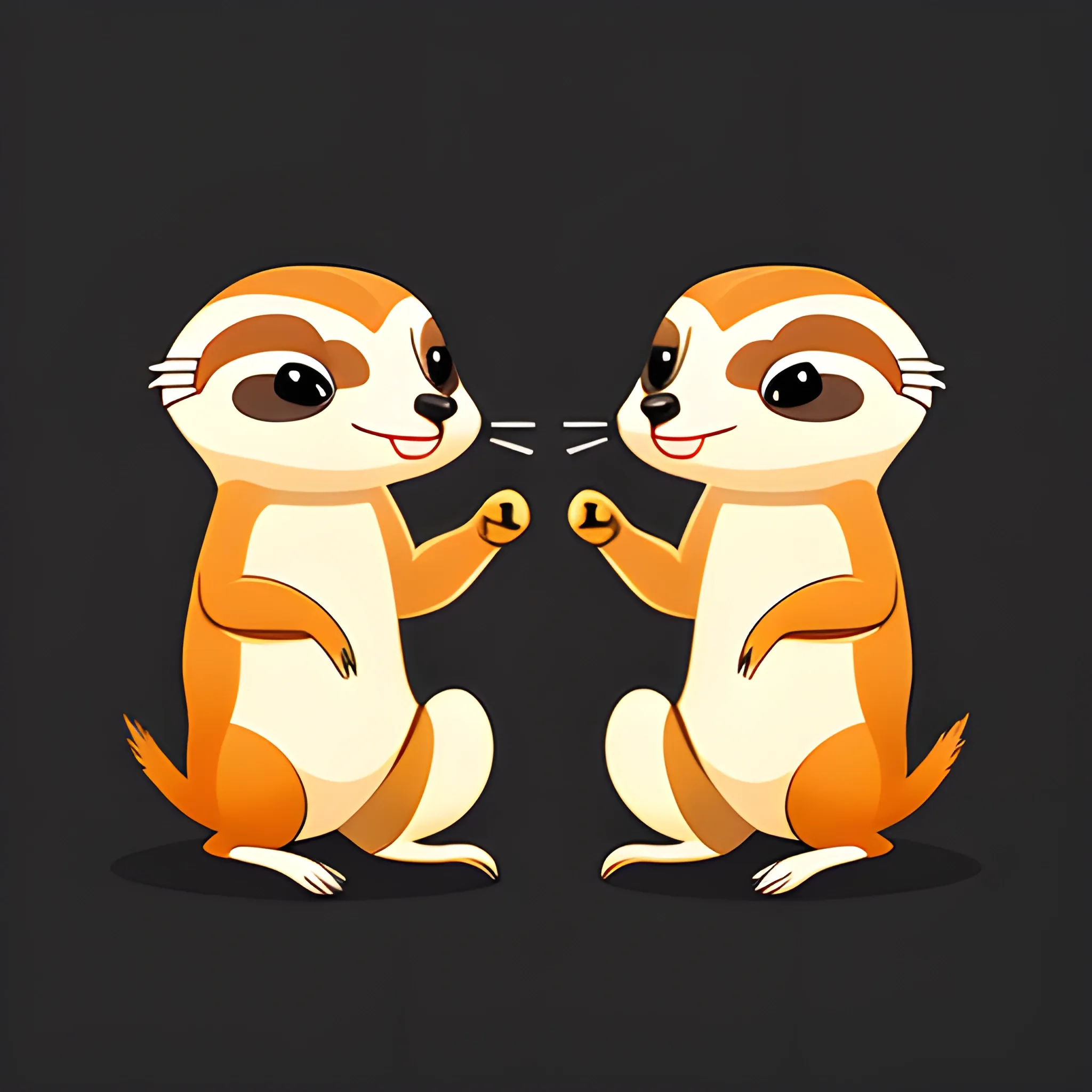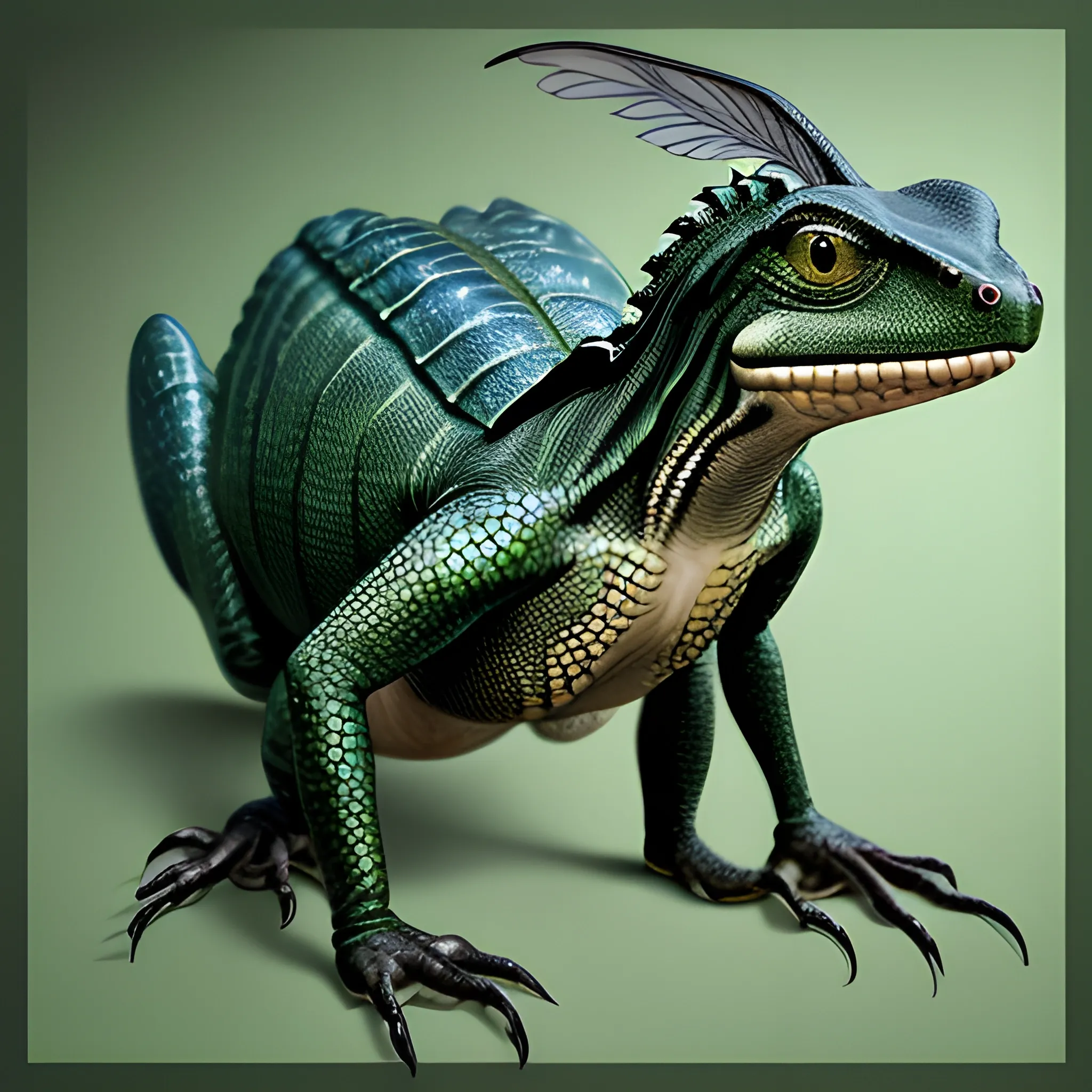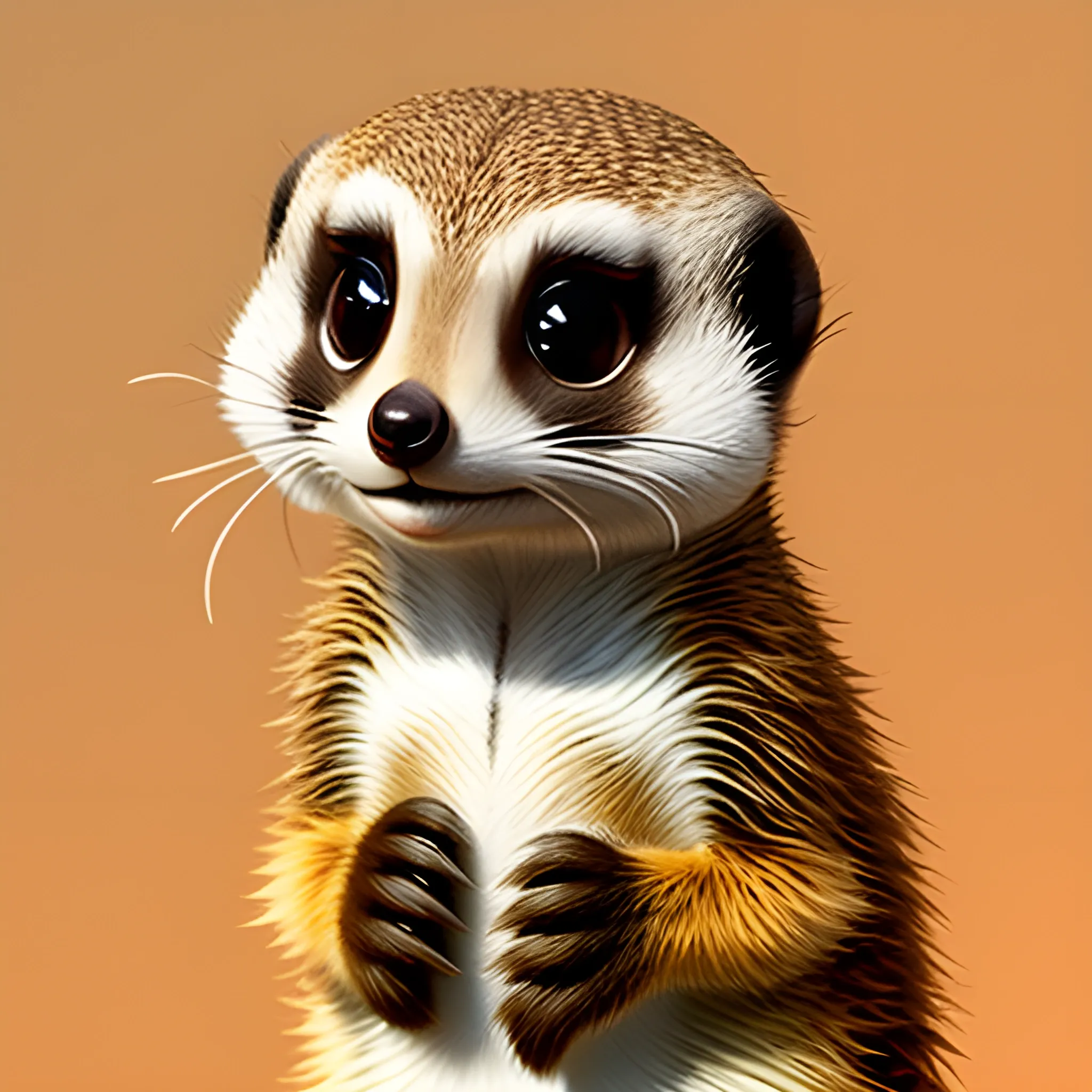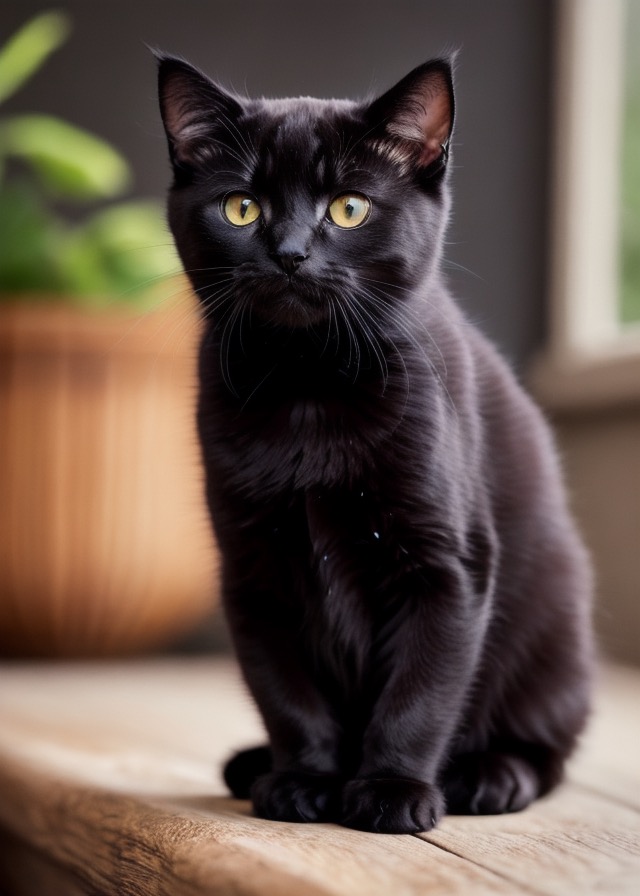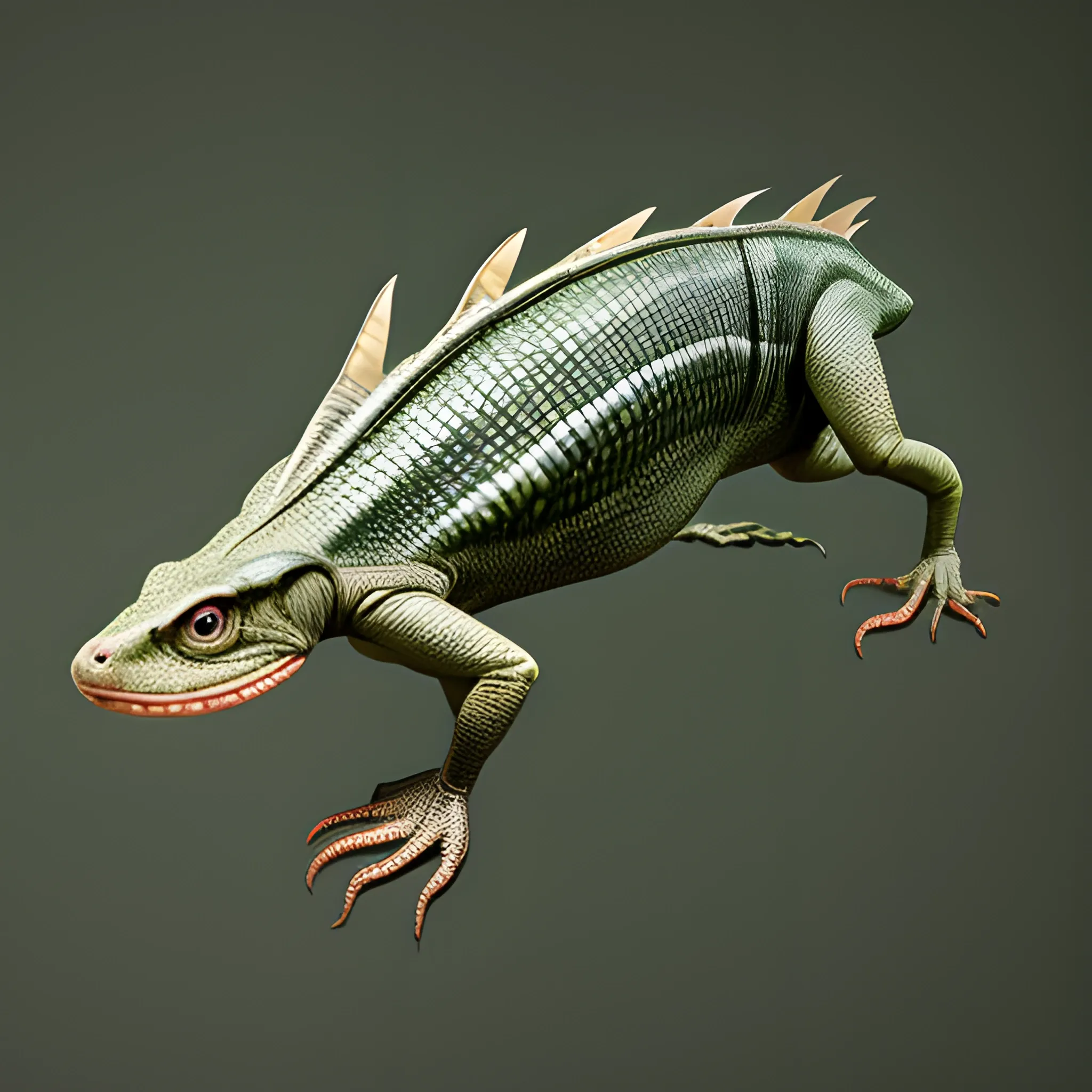AI Image Prompts for Mammal
Explore AI generated designs, images, art and prompts by top community artists and designers.
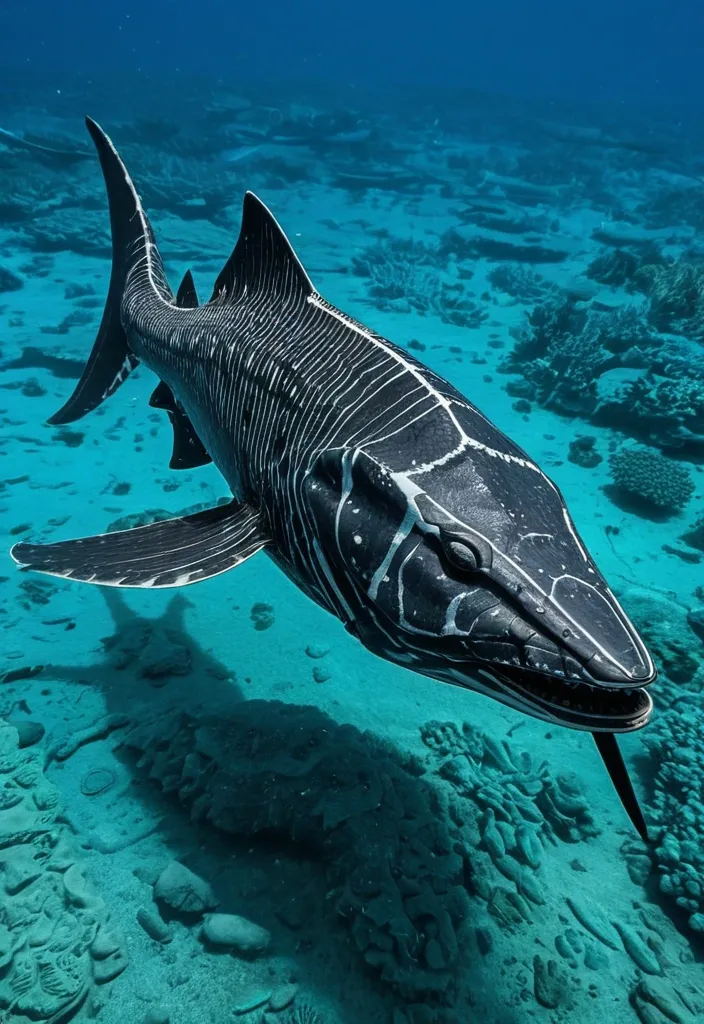
The Apex Marine Hybrid Titan Physical Characteristics Size & Weight: Ranges from 40 to 60 feet in length and weighs between 50 to 75 tons. Females are slightly larger and more robust , males more streamlined and powerful. Males are black with dark gray tiger stripes while the females are black with light gray tiger stripes. Body Structure: A massive , hydrodynamic body inspired by Mosasaurus Hoffmannii and Megalodon , covered in large , bony , overlapping Arapaima-like scales for durability and flexibility. The skin has smooth , blubber-like layers akin to bottlenose dolphins , providing insulation , healing properties , and streamlined contours. Fins & Limbs: Possesses rigid , tiltable pectoral fins like the Black Marlin for ultra-fast swimming speeds up to 82 mph. Large , paddle-like front flippers reminiscent of Archelon Ischyros enable powerful propulsion. On land , it moves by scooting or sliding using mucus secreted from Atlantic hagfish-like glands for defense and moisture retention. Head & Jaws: Enormous jaws combine Predator X and Megalodon strength , delivering a bite force exceeding 40 , 000 PSI. Teeth are large and serrated for cutting prey , while the skull is flexible for swallowing large marine mammals whole. Venomous Defense: Crown-of-Thorns starfish inspired venomous spines protrude along the dorsal ridge and tail , deterring predators and causing painful wounds. These spines can regenerate if lost , thanks to axolotl-like regenerative abilities. Respiration: Unique dual respiratory system with both functional lungs and gills , allowing extended underwater hunting and brief terrestrial excursions. Can remain on land for up to an hour. Coloration: Adaptive Mexican Molly-like coloration that shifts subtly with salinity and environment , aiding camouflage in diverse marine settings. Abilities & Behavior Speed & Agility: Capable of bursts up to 82 mph , rivaling the Black Marlin , with powerful tail flukes and flexible body segments enhancing propulsion and maneuverability. Hunting Strategy: Silent , stealthy predator like the Transient Killer Whale , using passive listening to detect prey rather than echolocation. Hunts primarily marine mammals but can take down large fish and other sea creatures. Vocalizes only post-capture , maintaining stealth. Social Structure: Exists in small family groups of 3 to 7 individuals , typically one male and two females designed for reproduction and cooperative hunting. The males are shorter and more muscular , optimized for quick strikes , while females are larger and agile , coordinating group tactics. Reproduction: Viviparous , giving live births to well-developed young. The trio was genetically engineered for population sustainability and social balances ,
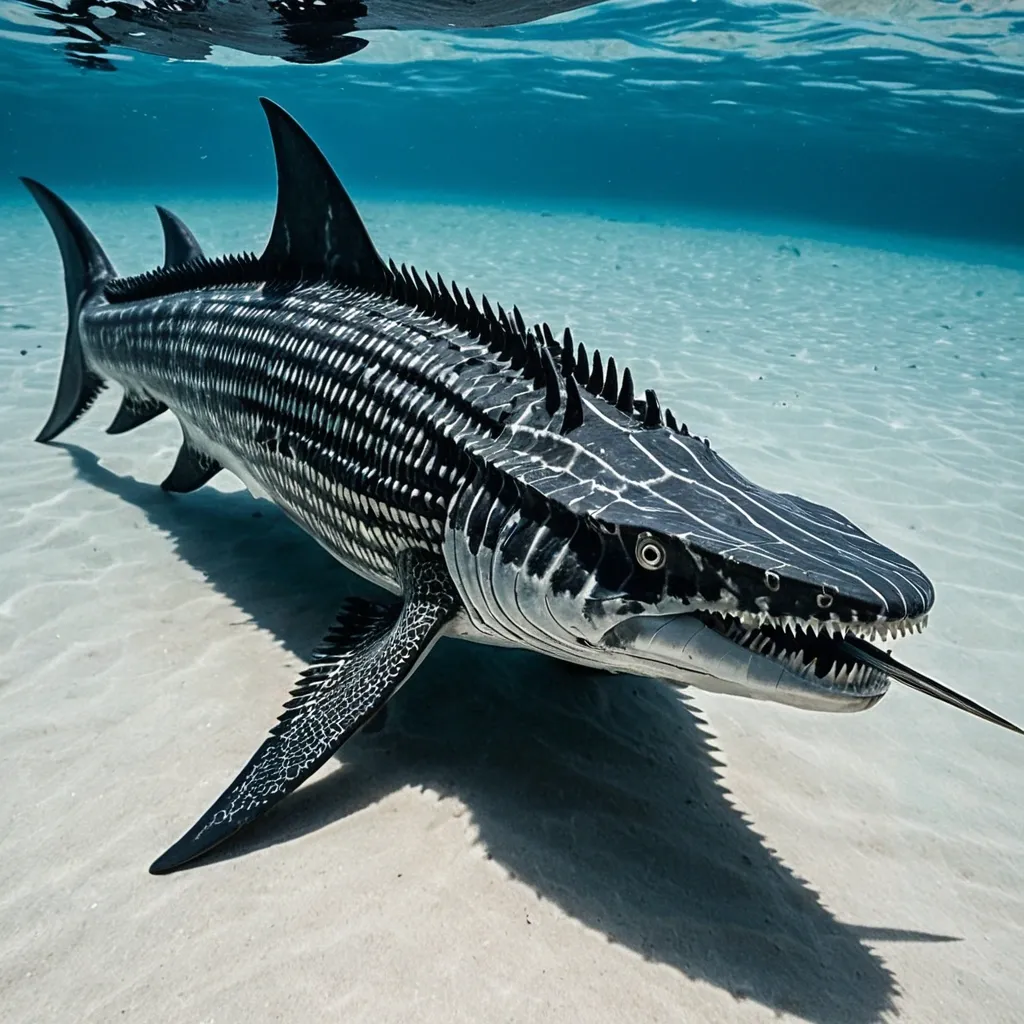
The Apex Marine Hybrid Titan Physical Characteristics Size & Weight: Ranges from 40 to 60 feet in length and weighs between 50 to 75 tons. Females are slightly larger and more robust , males more streamlined and powerful. Males are black with dark gray tiger stripes while the females are black with light gray tiger stripes. Body Structure: A massive , hydrodynamic body inspired by Mosasaurus Hoffmannii and Megalodon , covered in large , bony , overlapping Arapaima-like scales for durability and flexibility. The skin has smooth , blubber-like layers akin to bottlenose dolphins , providing insulation , healing properties , and streamlined contours. Fins & Limbs: Possesses rigid , tiltable pectoral fins like the Black Marlin for ultra-fast swimming speeds up to 82 mph. Large , paddle-like front flippers reminiscent of Archelon Ischyros enable powerful propulsion. On land , it moves by scooting or sliding using mucus secreted from Atlantic hagfish-like glands for defense and moisture retention. Head & Jaws: Enormous jaws combine Predator X and Megalodon strength , delivering a bite force exceeding 40 , 000 PSI. Teeth are large and serrated for cutting prey , while the skull is flexible for swallowing large marine mammals whole. Venomous Defense: Crown-of-Thorns starfish inspired venomous spines protrude along the dorsal ridge and tail , deterring predators and causing painful wounds. These spines can regenerate if lost , thanks to axolotl-like regenerative abilities. Respiration: Unique dual respiratory system with both functional lungs and gills , allowing extended underwater hunting and brief terrestrial excursions. Can remain on land for up to an hour. Coloration: Adaptive Mexican Molly-like coloration that shifts subtly with salinity and environment , aiding camouflage in diverse marine settings. Abilities & Behavior Speed & Agility: Capable of bursts up to 82 mph , rivaling the Black Marlin , with powerful tail flukes and flexible body segments enhancing propulsion and maneuverability. Hunting Strategy: Silent , stealthy predator like the Transient Killer Whale , using passive listening to detect prey rather than echolocation. Hunts primarily marine mammals but can take down large fish and other sea creatures. Vocalizes only post-capture , maintaining stealth. Social Structure: Exists in small family groups of 3 to 7 individuals , typically one male and two females designed for reproduction and cooperative hunting. The males are shorter and more muscular , optimized for quick strikes , while females are larger and agile , coordinating group tactics. Reproduction: Viviparous , giving live births to well-developed young. The trio was genetically engineered for population sustainability and social balance. Regeneration: Axolotl-like regenerative powers allow rapid healing of wounds , including regrowing lost venomous spines and damaged tissues , boosting survival in brutal oceanic battles. Defense: Mucus secretion not only keeps skin moist on land but acts as a slippery , protective barrier against parasites and predators. Venomous spines along the back add a lethal deterrent. ,
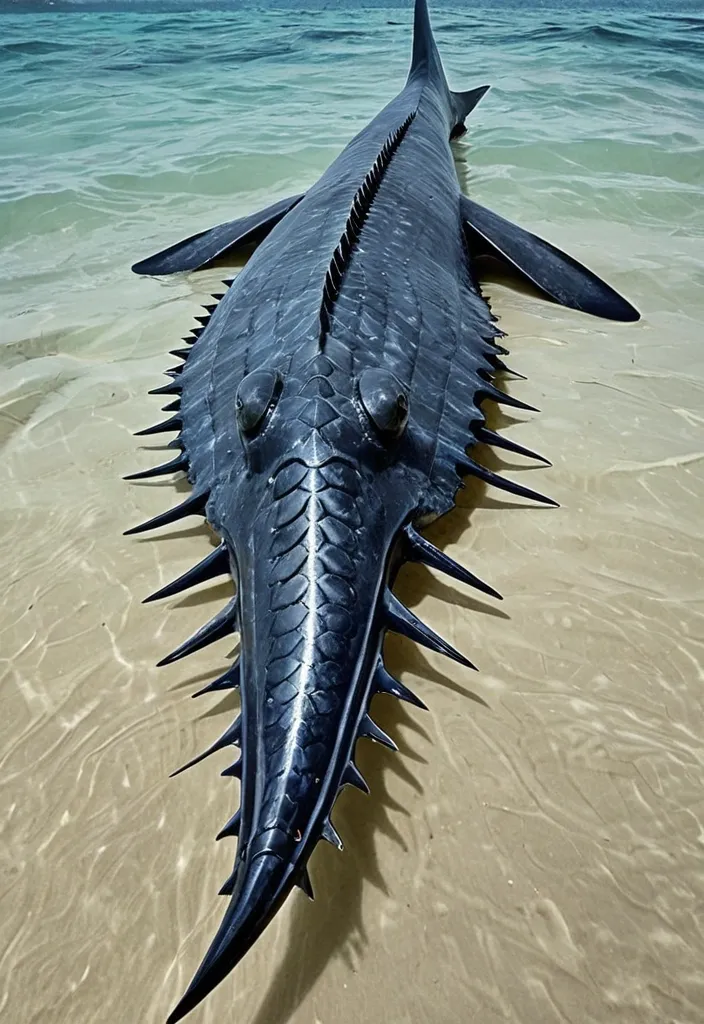
The Apex Marine Hybrid Titan Physical Characteristics Size & Weight: Ranges from 40 to 60 feet in length and weighs between 50 to 75 tons. Females are slightly larger and more robust , males more streamlined and powerful. Males are black with dark gray tiger stripes while the females are black with light gray tiger stripes. Body Structure: A massive , hydrodynamic body inspired by Mosasaurus Hoffmannii and Megalodon , covered in large , bony , overlapping Arapaima-like scales for durability and flexibility. The skin has smooth , blubber-like layers akin to bottlenose dolphins , providing insulation , healing properties , and streamlined contours. Fins & Limbs: Possesses rigid , tiltable pectoral fins like the Black Marlin for ultra-fast swimming speeds up to 82 mph. Large , paddle-like front flippers reminiscent of Archelon Ischyros enable powerful propulsion. On land , it moves by scooting or sliding using mucus secreted from Atlantic hagfish-like glands for defense and moisture retention. Head & Jaws: Enormous jaws combine Predator X and Megalodon strength , delivering a bite force exceeding 40 , 000 PSI. Teeth are large and serrated for cutting prey , while the skull is flexible for swallowing large marine mammals whole. Venomous Defense: Crown-of-Thorns starfish inspired venomous spines protrude along the dorsal ridge and tail , deterring predators and causing painful wounds. These spines can regenerate if lost , thanks to axolotl-like regenerative abilities. Respiration: Unique dual respiratory system with both functional lungs and gills , allowing extended underwater hunting and brief terrestrial excursions. Can remain on land for up to an hour. Coloration: Adaptive Mexican Molly-like coloration that shifts subtly with salinity and environment , aiding camouflage in diverse marine settings. Abilities & Behavior Speed & Agility: Capable of bursts up to 82 mph , rivaling the Black Marlin , with powerful tail flukes and flexible body segments enhancing propulsion and maneuverability. Hunting Strategy: Silent , stealthy predator like the Transient Killer Whale , using passive listening to detect prey rather than echolocation. Hunts primarily marine mammals but can take down large fish and other sea creatures. Vocalizes only post-capture , maintaining stealth. Social Structure: Exists in small family groups of 3 to 7 individuals , typically one male and two females designed for reproduction and cooperative hunting. The males are shorter and more muscular , optimized for quick strikes , while females are larger and agile , coordinating group tactics. Reproduction: Viviparous , giving live births to well-developed young. The trio was genetically engineered for population sustainability and social balance. Regeneration: Axolotl-like regenerative powers allow rapid healing of wounds , including regrowing lost venomous spines and damaged tissues , boosting survival in brutal oceanic battles. Defense: Mucus secretion not only keeps skin moist on land but acts as a slippery , protective barrier against parasites and predators. Venomous spines along the back add a lethal deterrent. ,
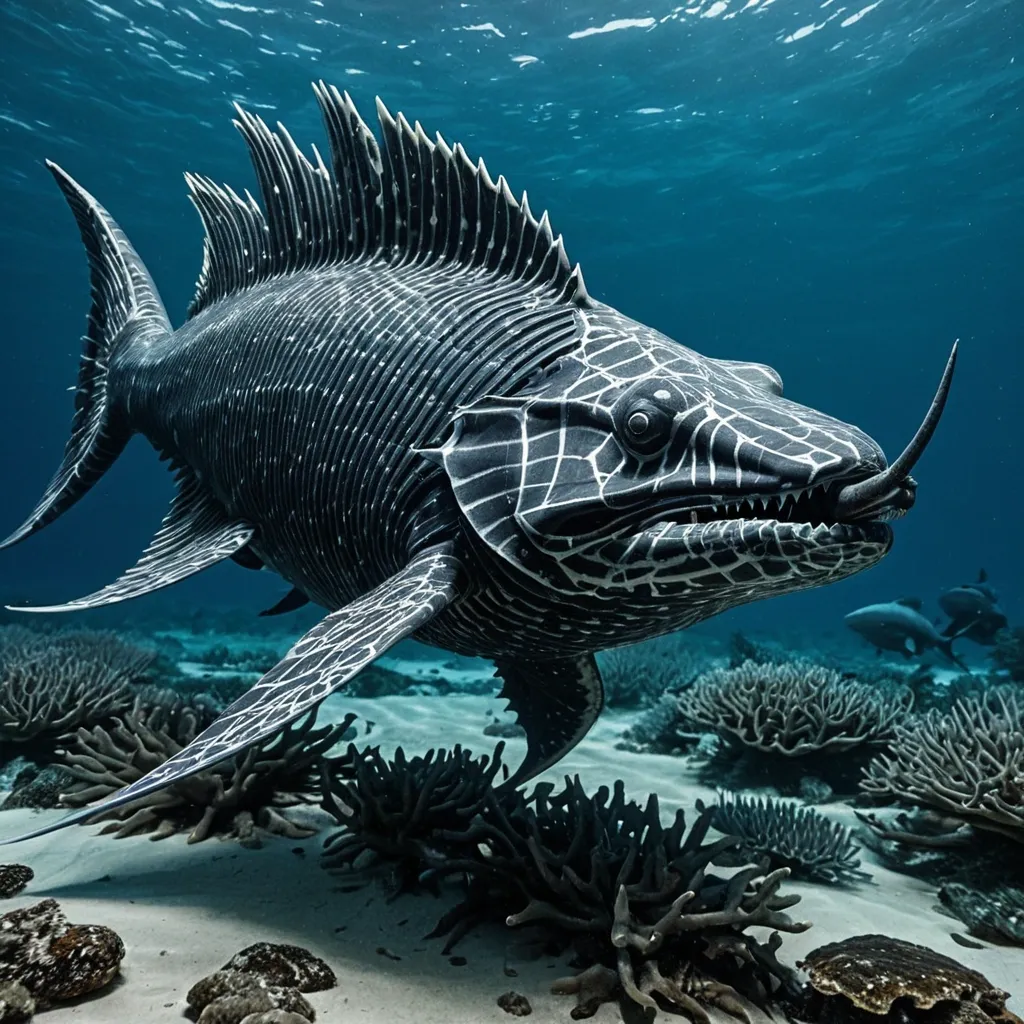
The Apex Marine Hybrid Titan Physical Characteristics Size & Weight: Ranges from 40 to 60 feet in length and weighs between 50 to 75 tons. Females are slightly larger and more robust , males more streamlined and powerful. Males are black with dark gray tiger stripes while the females are black with light gray tiger stripes. Body Structure: A massive , hydrodynamic body inspired by Mosasaurus Hoffmannii and Megalodon , covered in large , bony , overlapping Arapaima-like scales for durability and flexibility. The skin has smooth , blubber-like layers akin to bottlenose dolphins , providing insulation , healing properties , and streamlined contours. Fins & Limbs: Possesses rigid , tiltable pectoral fins like the Black Marlin for ultra-fast swimming speeds up to 82 mph. Large , paddle-like front flippers reminiscent of Archelon Ischyros enable powerful propulsion. On land , it moves by scooting or sliding using mucus secreted from Atlantic hagfish-like glands for defense and moisture retention. Head & Jaws: Enormous jaws combine Predator X and Megalodon strength , delivering a bite force exceeding 40 , 000 PSI. Teeth are large and serrated for cutting prey , while the skull is flexible for swallowing large marine mammals whole. Venomous Defense: Crown-of-Thorns starfish inspired venomous spines protrude along the dorsal ridge and tail , deterring predators and causing painful wounds. These spines can regenerate if lost , thanks to axolotl-like regenerative abilities. Respiration: Unique dual respiratory system with both functional lungs and gills , allowing extended underwater hunting and brief terrestrial excursions. Can remain on land for up to an hour. Coloration: Adaptive Mexican Molly-like coloration that shifts subtly with salinity and environment , aiding camouflage in diverse marine settings. Abilities & Behavior Speed & Agility: Capable of bursts up to 82 mph , rivaling the Black Marlin , with powerful tail flukes and flexible body segments enhancing propulsion and maneuverability. Hunting Strategy: Silent , stealthy predator like the Transient Killer Whale , using passive listening to detect prey rather than echolocation. Hunts primarily marine mammals but can take down large fish and other sea creatures. Vocalizes only post-capture , maintaining stealth. Social Structure: Exists in small family groups of 3 to 7 individuals , typically one male and two females designed for reproduction and cooperative hunting. The males are shorter and more muscular , optimized for quick strikes , while females are larger and agile , coordinating group tactics. Reproduction: Viviparous , giving live births to well-developed young. The trio was genetically engineered for population sustainability and social balance. Regeneration: Axolotl-like regenerative powers allow rapid healing of wounds , including regrowing lost venomous spines and damaged tissues , boosting survival in brutal oceanic battles. Defense: Mucus secretion not only keeps skin moist on land but acts as a slippery , protective barrier against parasites and predators. Venomous spines along the back add a lethal deterrent. ,
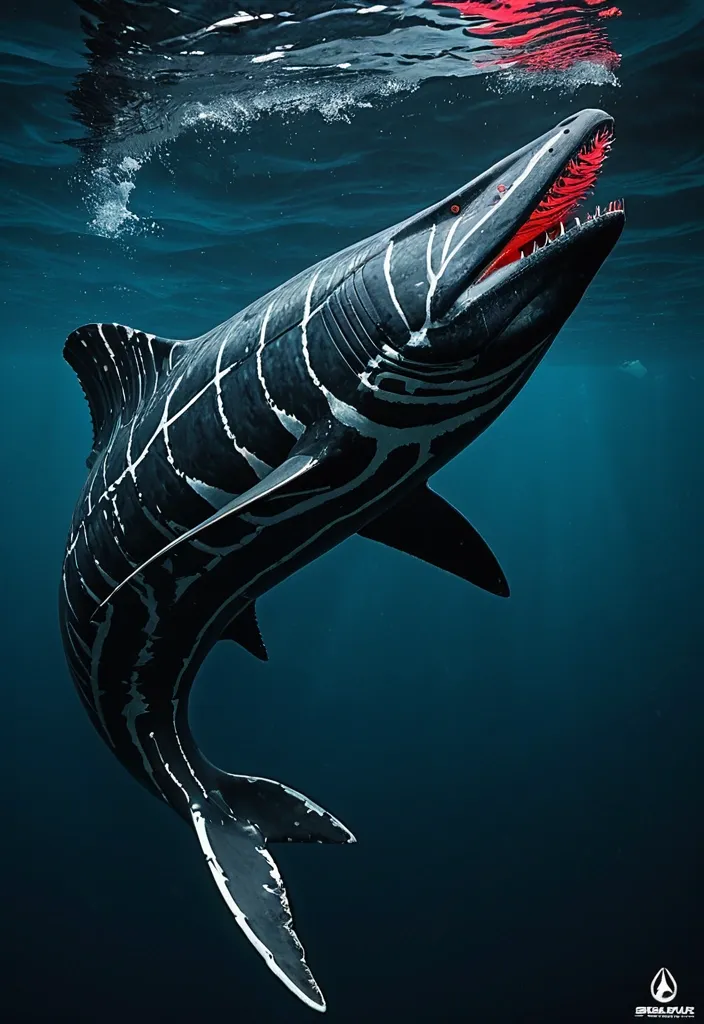
Physical Characteristics: Size & Weight: Between 40 to 60 feet in length , weighing 50 to 75 tons. Coloration: Males: Sleek black base with dark gray tiger stripes accented by subtle red bioluminescent highlights along the stripes , glowing faintly in deep ocean darkness. Females: Larger and more robust with black base and light gray tiger stripes , also featuring red bioluminescent patterns that pulse rhythmically. Body Structure: Hydrodynamic , muscular body combining the streamlined agility of the Shortfin Mako and Black Marlin with the robust power of Predator X and Megalodon. Rigid pectoral fins adapted from Black Marlin , capable of tilting back to reduce drag at high speeds. The tailend is a powerful fluke for propulsion , inspired by Mosasaurus Hoffmannii and Orca anatomy. Thick , overlapping bony scales similar to Arapaima , providing a durable armor that flexes with movement. Limbs: Powerful large flippers adapted for scooting or sliding on land , coated with mucus inspired by the Atlantic hagfish for moisture retention and defense. Capable of limited terrestrial movement , allowing brief excursions out of water. Head & Jaw: Massive jaws with over 40 , 000 PSI bite force , blending Predator X’s mighty jaw strength with the long canine teeth and powerful bite of the Leopard Seal. Flexible skull allowing swallowing of large prey whole. Respiration: Dual respiratory system with both functional lungs and gills , enabling survival from surface to abyssal depths (500 to 9 , 800 feet). Bioluminescence: Red bioluminescent photophores patterned in tiger stripes , used for communication , intimidation , mating displays , and luring prey in the dark ocean depths. Abilities & Traits: Speed & Agility: Capable of bursts up to 82 mph , rivaling the fastest sea creatures like the Black Marlin. Agile hunter using stealth and passive listening , mimicking Transient Killer Whale hunting strategies. Social Structure: Small family groups of three (one male , two females) designed for efficient reproduction and hunting. Males are more streamlined and shorter , optimized for speed and power; females are larger , robust , and agile for endurance and nurturing. Regeneration: Remarkable limb regeneration inspired by axolotl and Crown-of-Thorns starfish , able to regrow lost fins , limbs , and even parts of internal organs. Defense: Venomous spines derived from Crown-of-Thorns starfish line its dorsal ridge , delivering painful venomous wounds to attackers. Mucus coating for defense and moisture retention , also making it slippery and difficult to grasp. Healing: A blubber-like layer similar to dolphins provides insulation , buoyancy , and antimicrobial properties that accelerate healing of wounds. Communication: Uses low-frequency growls , barks , and hisses inspired by saltwater crocodile sounds , combined with bioluminescent signals and stealth vocalizations for hunting. Reproduction: Live births occur at extreme depths (up to 9 , 800 feet) , with offspring adapted to survive in crushing pressures and cold temperatures. Backstory: Created by the Ceno Evail Crossgen Corporation , the Megalosaurus Orca was engineered to dominate marine ecosystems and serve as a living testament to the pinnacle of hybrid dinosaur biotechnology. Designed to combine the raw power of ancient sea predators like Predator X and Megalodon with the intelligence , social hunting , and adaptability of modern marine mammals and fish , this hybrid thrives in the dark , cold depths of the ocean where few predators dare to venture. Their unique physiology allows them to traverse both deep ocean trenches and brief terrestrial environments , making them versatile apex predators. The three known individuals—one male and two females—form a tight-knit family unit , hunting elusive marine mammals and large fish with stealth and precision. Their bioluminescent stripes not only intimidate rivals but also help coordinate complex hunting maneuvers in pitch-black waters. With a lifespan of 100 to 135 years , they are long-lived titans of the sea , their legacy intertwined with the future of marine genetic engineering and the mysteries of oceanic evolution. , ,
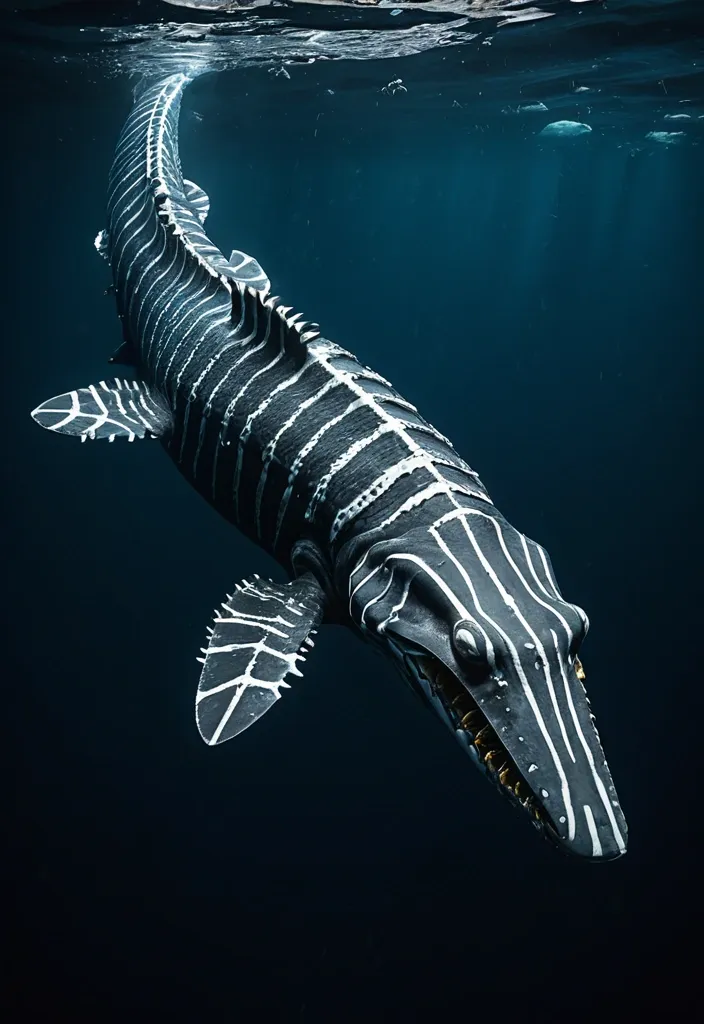
Megalosaurus Orca The Apex Hybrid of Oceanic Depths Physical Characteristics: Length: 40-60 feet Weight: 50-75 tons Lifespan: 100-135 years Coloration: Males: Jet black base with light gray tiger stripes Females: Slate gray base with white tiger stripes Bioluminescent red photophores arranged in tiger stripe patterns along the flanks and dorsal ridge , glowing vividly in abyssal darkness Body: Robust , muscular frame combining the thick , armored scales of saltwater crocodile with the hydrodynamic , flexible body of Mosasaurus Hoffmannii Fins: Large , rigid pectoral fins capable of tilting backward to reduce drag , inspired by the Black Marlin’s speed adaptations Limbs: Powerful flippers adapted for both swimming and short-distance land movement , similar to a leopard seal’s scooting style Jaw: Enormous , reinforced jaws with over 40 , 000+ PSI bite force , lined with long , razor-sharp canine teeth from Predator X and Megalodon genetics Skin: Coated with a thick mucus layer secreted like the Atlantic hagfish , providing parasite defense , moisture retention , and a slippery surface to evade predators and prey alike Respiratory system: Dual-function lungs and gills allow breathing in surface air and extracting oxygen from water , enabling survival from ocean surface to depths up to 9 , 800 feet Sensory: Passive listening capabilities from transient killer whale lineage enable near-silent hunting; bioluminescent photophores aid in communication and prey attraction in deep-sea darkness Abilities and Adaptations: Speed: Can burst up to 62-82 mph in water , rivaling the fastest sea creatures Salinity tolerance: Thrives in a wide range of water conditions , from freshwater estuaries to deep oceanic trenches , thanks to Mexican molly and saltwater crocodile genetics Regeneration: Limb and tissue regeneration inspired by axolotl traits , allowing recovery from injuries sustained during hunting or territorial battles Social structure: Lives in small , tight-knit family groups (1 male , 2 females) for efficient hunting and offspring rearing , reflecting transient killer whale social dynamics Reproduction: Live births occur at abyssal depths (~9 , 800 feet) , with offspring born adapted to extreme pressure and cold; males are streamlined for speed and power , while females are larger and more robust for nurturing and endurance Communication: Uses bioluminescent patterns and low-frequency vocalizations for mating displays , intimidation , and coordination during hunting Defense: Venomous spines inspired by the crown-of-thorns starfish line the dorsal ridge , delivering painful wounds to predators or rivals Hunting: Stealthy predator using passive listening to locate marine mammals and large prey; can leap and strike with explosive power , aided by shortfin mako shark agility and predator X bite force Backstory: Created in the secretive labs of Ceno Evail Crossgen Corporation , the Megalosaurus Orca was engineered as the ultimate marine apex predator , combining the might of prehistoric giants with the cunning and adaptability of modern ocean hunters. Designed to dominate a range of aquatic environments from sunlit coasts to the crushing abyss , these hybrids serve both as a scientific marvel and a living weapon for deep-sea exploration and control. The trio—one male and two females—are monitored closely , their social bonds and hunting strategies studied to unlock secrets of marine dominance and survival. Their ability to navigate and thrive across extreme depths , combined with their regenerative powers and venomous defenses , make them nearly invincible in their domain. ,
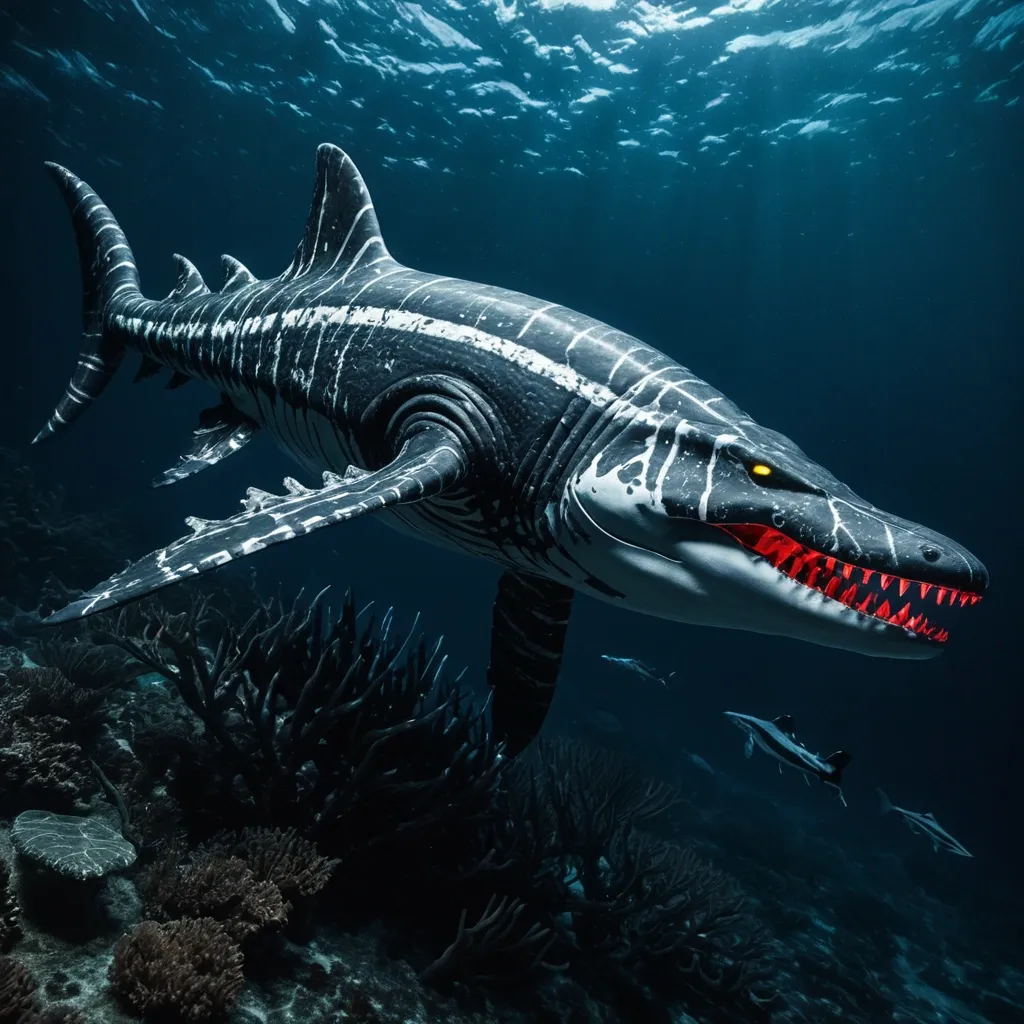
Megalosaurus Orca The Apex Hybrid of Oceanic Depths Physical Characteristics: Length: 40-60 feet Weight: 50-75 tons Lifespan: 100-135 years Coloration: Males: Jet black base with light gray tiger stripes Females: Slate gray base with white tiger stripes Bioluminescent red photophores arranged in tiger stripe patterns along the flanks and dorsal ridge , glowing vividly in abyssal darkness Body: Robust , muscular frame combining the thick , armored scales of saltwater crocodile with the hydrodynamic , flexible body of Mosasaurus Hoffmannii Fins: Large , rigid pectoral fins capable of tilting backward to reduce drag , inspired by the Black Marlin’s speed adaptations Limbs: Powerful flippers adapted for both swimming and short-distance land movement , similar to a leopard seal’s scooting style Jaw: Enormous , reinforced jaws with over 40 , 000+ PSI bite force , lined with long , razor-sharp canine teeth from Predator X and Megalodon genetics Skin: Coated with a thick mucus layer secreted like the Atlantic hagfish , providing parasite defense , moisture retention , and a slippery surface to evade predators and prey alike Respiratory system: Dual-function lungs and gills allow breathing in surface air and extracting oxygen from water , enabling survival from ocean surface to depths up to 9 , 800 feet Sensory: Passive listening capabilities from transient killer whale lineage enable near-silent hunting; bioluminescent photophores aid in communication and prey attraction in deep-sea darkness Abilities and Adaptations: Speed: Can burst up to 62-82 mph in water , rivaling the fastest sea creatures Salinity tolerance: Thrives in a wide range of water conditions , from freshwater estuaries to deep oceanic trenches , thanks to Mexican molly and saltwater crocodile genetics Regeneration: Limb and tissue regeneration inspired by axolotl traits , allowing recovery from injuries sustained during hunting or territorial battles Social structure: Lives in small , tight-knit family groups (1 male , 2 females) for efficient hunting and offspring rearing , reflecting transient killer whale social dynamics Reproduction: Live births occur at abyssal depths (~9 , 800 feet) , with offspring born adapted to extreme pressure and cold; males are streamlined for speed and power , while females are larger and more robust for nurturing and endurance Communication: Uses bioluminescent patterns and low-frequency vocalizations for mating displays , intimidation , and coordination during hunting Defense: Venomous spines inspired by the crown-of-thorns starfish line the dorsal ridge , delivering painful wounds to predators or rivals Hunting: Stealthy predator using passive listening to locate marine mammals and large prey; can leap and strike with explosive power , aided by shortfin mako shark agility and predator X bite force Backstory: Created in the secretive labs of Ceno Evail Crossgen Corporation , the Megalosaurus Orca was engineered as the ultimate marine apex predator , combining the might of prehistoric giants with the cunning and adaptability of modern ocean hunters. Designed to dominate a range of aquatic environments from sunlit coasts to the crushing abyss , these hybrids serve both as a scientific marvel and a living weapon for deep-sea exploration and control. The trio—one male and two females—are monitored closely , their social bonds and hunting strategies studied to unlock secrets of marine dominance and survival. Their ability to navigate and thrive across extreme depths , combined with their regenerative powers and venomous defenses , make them nearly invincible in their domain. ,
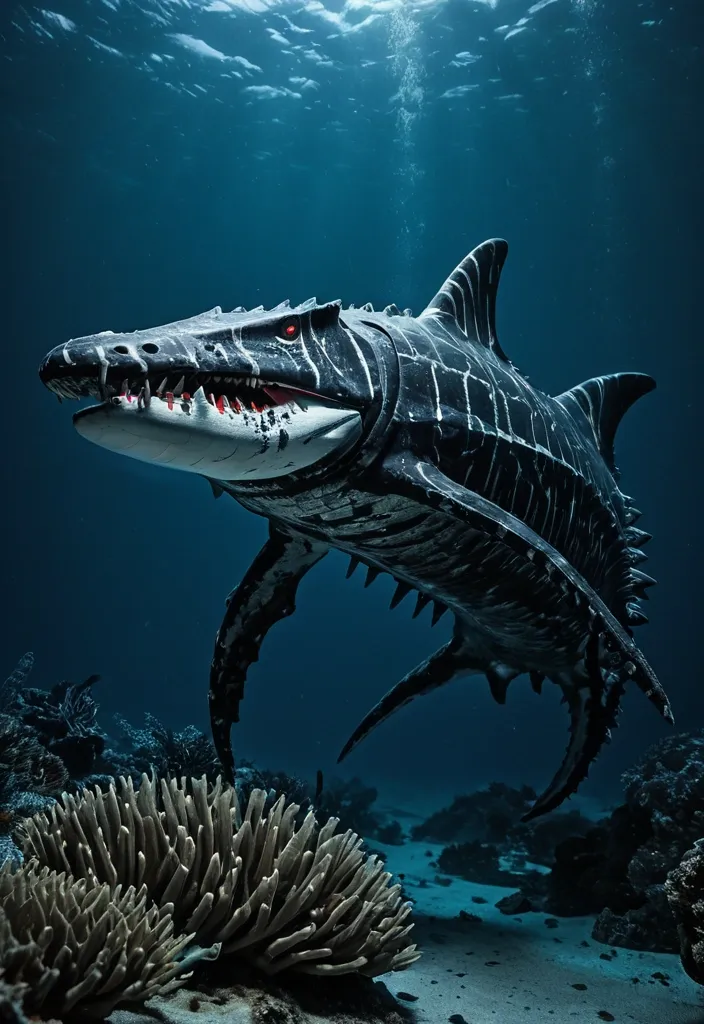
Megalosaurus Orca The Apex Hybrid of Oceanic Depths Physical Characteristics: Length: 40-60 feet Weight: 50-75 tons Lifespan: 100-135 years Coloration: Males: Jet black base with light gray tiger stripes Females: Slate gray base with white tiger stripes Bioluminescent red photophores arranged in tiger stripe patterns along the flanks and dorsal ridge , glowing vividly in abyssal darkness Body: Robust , muscular frame combining the thick , armored scales of saltwater crocodile with the hydrodynamic , flexible body of Mosasaurus Hoffmannii Fins: Large , rigid pectoral fins capable of tilting backward to reduce drag , inspired by the Black Marlin’s speed adaptations Limbs: Powerful flippers adapted for both swimming and short-distance land movement , similar to a leopard seal’s scooting style Jaw: Enormous , reinforced jaws with over 40 , 000+ PSI bite force , lined with long , razor-sharp canine teeth from Predator X and Megalodon genetics Skin: Coated with a thick mucus layer secreted like the Atlantic hagfish , providing parasite defense , moisture retention , and a slippery surface to evade predators and prey alike Respiratory system: Dual-function lungs and gills allow breathing in surface air and extracting oxygen from water , enabling survival from ocean surface to depths up to 9 , 800 feet Sensory: Passive listening capabilities from transient killer whale lineage enable near-silent hunting; bioluminescent photophores aid in communication and prey attraction in deep-sea darkness Abilities and Adaptations: Speed: Can burst up to 62-82 mph in water , rivaling the fastest sea creatures Salinity tolerance: Thrives in a wide range of water conditions , from freshwater estuaries to deep oceanic trenches , thanks to Mexican molly and saltwater crocodile genetics Regeneration: Limb and tissue regeneration inspired by axolotl traits , allowing recovery from injuries sustained during hunting or territorial battles Social structure: Lives in small , tight-knit family groups (1 male , 2 females) for efficient hunting and offspring rearing , reflecting transient killer whale social dynamics Reproduction: Live births occur at abyssal depths (~9 , 800 feet) , with offspring born adapted to extreme pressure and cold; males are streamlined for speed and power , while females are larger and more robust for nurturing and endurance Communication: Uses bioluminescent patterns and low-frequency vocalizations for mating displays , intimidation , and coordination during hunting Defense: Venomous spines inspired by the crown-of-thorns starfish line the dorsal ridge , delivering painful wounds to predators or rivals Hunting: Stealthy predator using passive listening to locate marine mammals and large prey; can leap and strike with explosive power , aided by shortfin mako shark agility and predator X bite force Backstory: Created in the secretive labs of Ceno Evail Crossgen Corporation , the Megalosaurus Orca was engineered as the ultimate marine apex predator , combining the might of prehistoric giants with the cunning and adaptability of modern ocean hunters. Designed to dominate a range of aquatic environments from sunlit coasts to the crushing abyss , these hybrids serve both as a scientific marvel and a living weapon for deep-sea exploration and control. The trio—one male and two females—are monitored closely , their social bonds and hunting strategies studied to unlock secrets of marine dominance and survival. Their ability to navigate and thrive across extreme depths , combined with their regenerative powers and venomous defenses , make them nearly invincible in their domain. ,
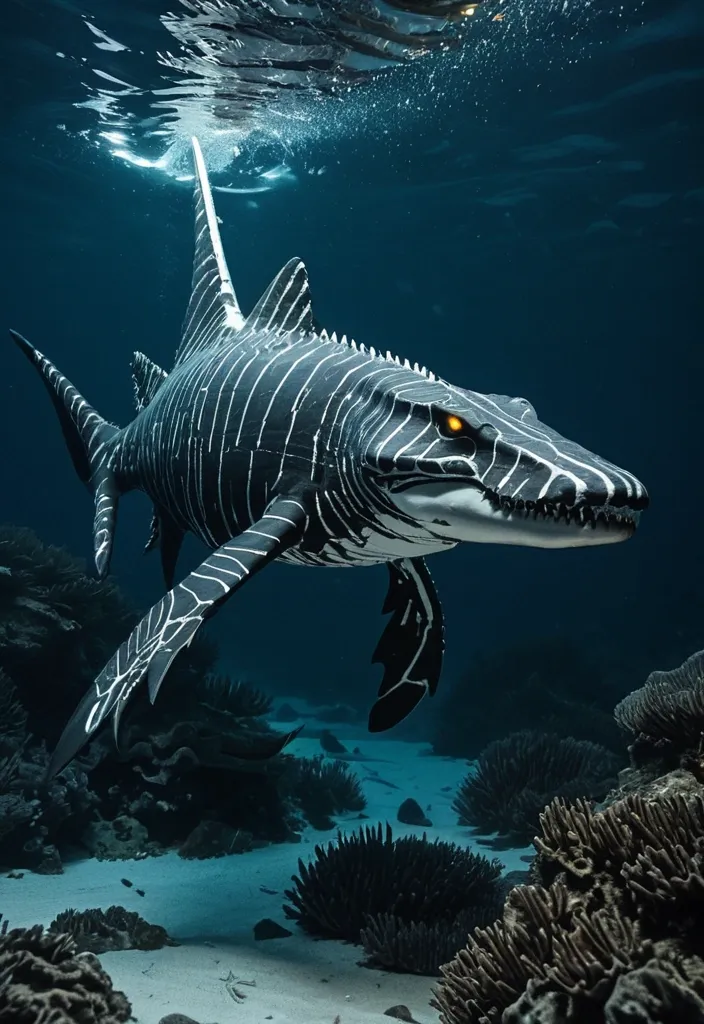
Megalosaurus Orca The Apex Hybrid of Oceanic Depths Physical Characteristics: Length: 40-60 feet Weight: 50-75 tons Lifespan: 100-135 years Coloration: Males: Jet black base with light gray tiger stripes Females: Slate gray base with white tiger stripes Bioluminescent red photophores arranged in tiger stripe patterns along the flanks and dorsal ridge , glowing vividly in abyssal darkness Body: Robust , muscular frame combining the thick , armored scales of saltwater crocodile with the hydrodynamic , flexible body of Mosasaurus Hoffmannii Fins: Large , rigid pectoral fins capable of tilting backward to reduce drag , inspired by the Black Marlin’s speed adaptations Limbs: Powerful flippers adapted for both swimming and short-distance land movement , similar to a leopard seal’s scooting style Jaw: Enormous , reinforced jaws with over 40 , 000+ PSI bite force , lined with long , razor-sharp canine teeth from Predator X and Megalodon genetics Skin: Coated with a thick mucus layer secreted like the Atlantic hagfish , providing parasite defense , moisture retention , and a slippery surface to evade predators and prey alike Respiratory system: Dual-function lungs and gills allow breathing in surface air and extracting oxygen from water , enabling survival from ocean surface to depths up to 9 , 800 feet Sensory: Passive listening capabilities from transient killer whale lineage enable near-silent hunting; bioluminescent photophores aid in communication and prey attraction in deep-sea darkness Abilities and Adaptations: Speed: Can burst up to 62-82 mph in water , rivaling the fastest sea creatures Salinity tolerance: Thrives in a wide range of water conditions , from freshwater estuaries to deep oceanic trenches , thanks to Mexican molly and saltwater crocodile genetics Regeneration: Limb and tissue regeneration inspired by axolotl traits , allowing recovery from injuries sustained during hunting or territorial battles Social structure: Lives in small , tight-knit family groups (1 male , 2 females) for efficient hunting and offspring rearing , reflecting transient killer whale social dynamics Reproduction: Live births occur at abyssal depths (~9 , 800 feet) , with offspring born adapted to extreme pressure and cold; males are streamlined for speed and power , while females are larger and more robust for nurturing and endurance Communication: Uses bioluminescent patterns and low-frequency vocalizations for mating displays , intimidation , and coordination during hunting Defense: Venomous spines inspired by the crown-of-thorns starfish line the dorsal ridge , delivering painful wounds to predators or rivals Hunting: Stealthy predator using passive listening to locate marine mammals and large prey; can leap and strike with explosive power , aided by shortfin mako shark agility and predator X bite force Backstory: Created in the secretive labs of Ceno Evail Crossgen Corporation , the Megalosaurus Orca was engineered as the ultimate marine apex predator , combining the might of prehistoric giants with the cunning and adaptability of modern ocean hunters. Designed to dominate a range of aquatic environments from sunlit coasts to the crushing abyss , these hybrids serve both as a scientific marvel and a living weapon for deep-sea exploration and control. The trio—one male and two females—are monitored closely , their social bonds and hunting strategies studied to unlock secrets of marine dominance and survival. Their ability to navigate and thrive across extreme depths , combined with their regenerative powers and venomous defenses , make them nearly invincible in their domain. ,
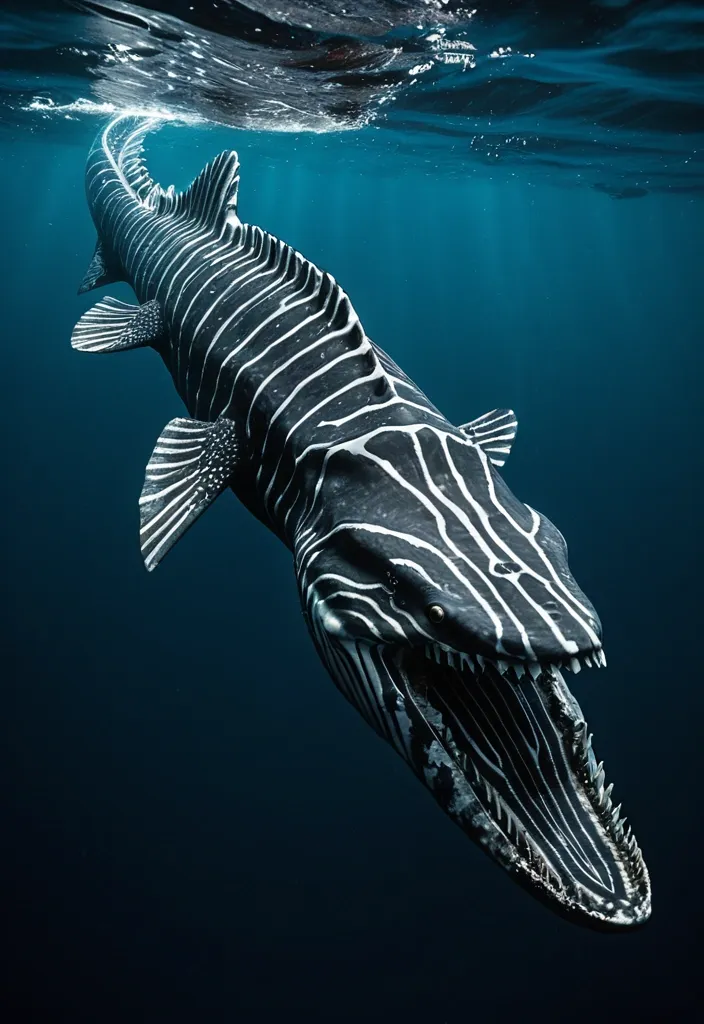
Megalosaurus Orca The Apex Hybrid of Oceanic Depths Physical Characteristics: Length: 40-60 feet Weight: 50-75 tons Lifespan: 100-135 years Coloration: Males: Jet black base with light gray tiger stripes Females: Slate gray base with white tiger stripes Bioluminescent red photophores arranged in tiger stripe patterns along the flanks and dorsal ridge , glowing vividly in abyssal darkness Body: Robust , muscular frame combining the thick , armored scales of saltwater crocodile with the hydrodynamic , flexible body of Mosasaurus Hoffmannii Fins: Large , rigid pectoral fins capable of tilting backward to reduce drag , inspired by the Black Marlin’s speed adaptations Limbs: Powerful flippers adapted for both swimming and short-distance land movement , similar to a leopard seal’s scooting style Jaw: Enormous , reinforced jaws with over 40 , 000+ PSI bite force , lined with long , razor-sharp canine teeth from Predator X and Megalodon genetics Skin: Coated with a thick mucus layer secreted like the Atlantic hagfish , providing parasite defense , moisture retention , and a slippery surface to evade predators and prey alike Respiratory system: Dual-function lungs and gills allow breathing in surface air and extracting oxygen from water , enabling survival from ocean surface to depths up to 9 , 800 feet Sensory: Passive listening capabilities from transient killer whale lineage enable near-silent hunting; bioluminescent photophores aid in communication and prey attraction in deep-sea darkness Abilities and Adaptations: Speed: Can burst up to 62-82 mph in water , rivaling the fastest sea creatures Salinity tolerance: Thrives in a wide range of water conditions , from freshwater estuaries to deep oceanic trenches , thanks to Mexican molly and saltwater crocodile genetics Regeneration: Limb and tissue regeneration inspired by axolotl traits , allowing recovery from injuries sustained during hunting or territorial battles Social structure: Lives in small , tight-knit family groups (1 male , 2 females) for efficient hunting and offspring rearing , reflecting transient killer whale social dynamics Reproduction: Live births occur at abyssal depths (~9 , 800 feet) , with offspring born adapted to extreme pressure and cold; males are streamlined for speed and power , while females are larger and more robust for nurturing and endurance Communication: Uses bioluminescent patterns and low-frequency vocalizations for mating displays , intimidation , and coordination during hunting Defense: Venomous spines inspired by the crown-of-thorns starfish line the dorsal ridge , delivering painful wounds to predators or rivals Hunting: Stealthy predator using passive listening to locate marine mammals and large prey; can leap and strike with explosive power , aided by shortfin mako shark agility and predator X bite force Backstory: Created in the secretive labs of Ceno Evail Crossgen Corporation , the Megalosaurus Orca was engineered as the ultimate marine apex predator , combining the might of prehistoric giants with the cunning and adaptability of modern ocean hunters. Designed to dominate a range of aquatic environments from sunlit coasts to the crushing abyss , these hybrids serve both as a scientific marvel and a living weapon for deep-sea exploration and control. The trio—one male and two females—are monitored closely , their social bonds and hunting strategies studied to unlock secrets of marine dominance and survival. Their ability to navigate and thrive across extreme depths , combined with their regenerative powers and venomous defenses , make them nearly invincible in their domain. ,
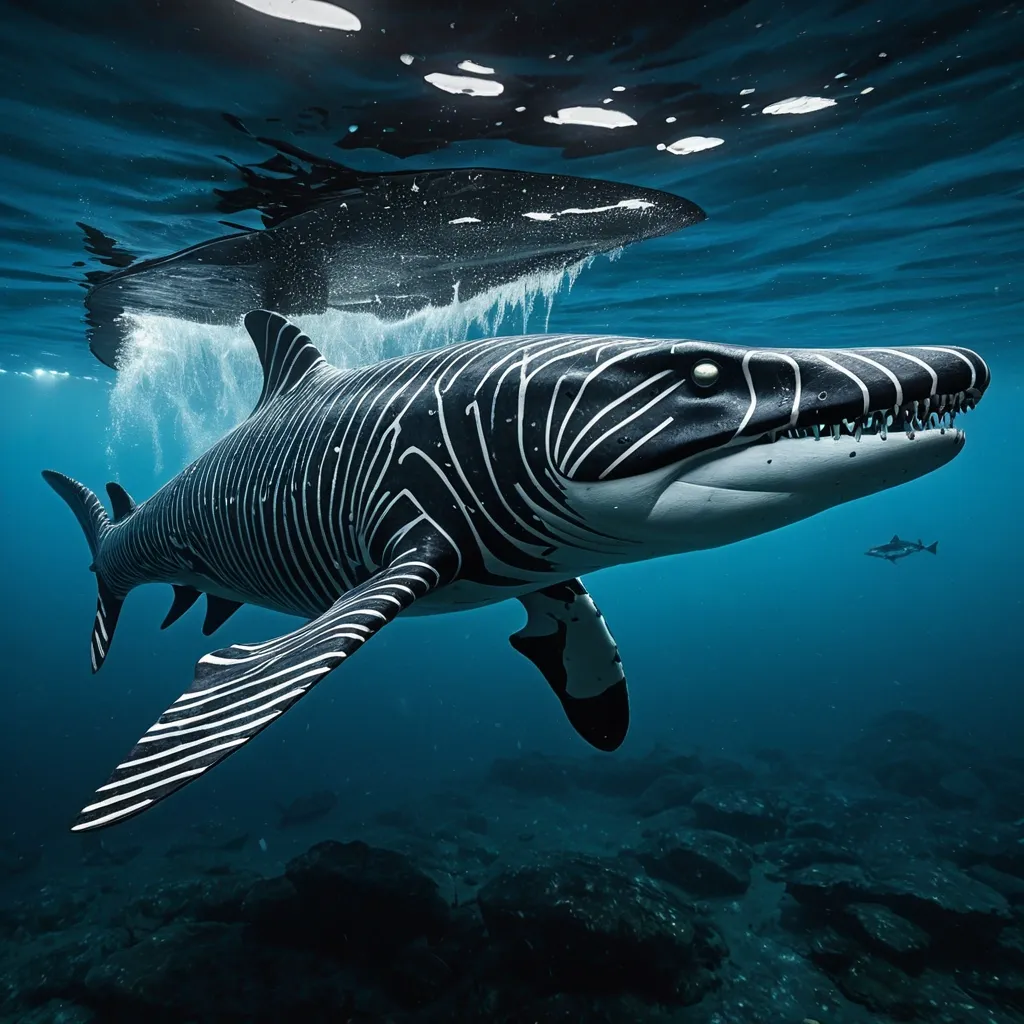
The Megalosaurus Orca is a colossal marine hybrid dinosaur , measuring between 40 to 60 feet in length and weighing an astonishing 50 to 75 tons. Its body combines the robust , thick musculature and mighty jaw strength of Predator X and Megalodon with the sleek hydrodynamics and agility of the Mosasaurus Hoffmannii and transient killer whale. The creature’s skin is armored with large , overlapping bony scales inspired by the Arapaima , offering both flexibility and formidable protection against predators and environmental hazards. Its coloration is sexually dimorphic: males boast a deep black base coat adorned with light gray tiger stripes , while females display a gray base with stark white tiger stripes. Both sexes feature vivid red bioluminescent photophores arranged in tiger stripe patterns along their flanks and dorsal fins , used for communication , intimidation , mating displays , and luring prey in the abyssal darkness. The Megalosaurus Orca’s rigid pectoral fins can tilt back to reduce drag during high-speed pursuits , enabling bursts of speed up to 82 mph , rivaling the Black Marlin and shortfin mako shark. Powerful flippers , inspired by the leopard seal , allow it to scoot or slide short distances on land , useful for navigating beaches and shallow coasts. Its head features powerful jaws lined with dozens of large , long canine teeth capable of delivering over 40 , 000 PSI bite force , capable of crushing almost anything in its path. The skull is flexible , allowing it to swallow large prey whole. Crown-of-Thorns starfish-like venomous spines stud its dorsal ridge , serving as a defensive mechanism against attackers , and it can regenerate lost spines and limbs rapidly , a gift from its axolotl heritage. Abilities: Dual Respiratory System: Equipped with both functional lungs and gills , it can breathe underwater and survive brief excursions on land , as well as thrive at depths from 500 to 9 , 800 feet. Mucus Defense: Inspired by the Atlantic hagfish , it secretes a thick mucus layer that deters parasites and predators while retaining moisture during surface rests or land visits. Blubber Insulation: A thick layer of blubber provides thermal insulation , antimicrobial protection , and aids in rapid healing of wounds. The blubber’s varying stiffness across the body creates a springlike swimming motion , enhancing speed and agility. Stealth Hunting: Utilizing the transient killer whale’s passive listening abilities and silent movement , it stalks marine mammals and large prey with deadly precision , avoiding echolocation to remain undetected. Bioluminescent Communication: Red photophores allow complex signaling in the dark ocean depths for social interaction , mating , and intimidation. Salinity Tolerance: Can thrive in a wide range of salinity levels , from freshwater estuaries to the deep ocean , thanks to genetic traits from Mexican molly and saltwater crocodile. Reproductive Strategy: Live births occur in crushing-pressure depths up to 9 , 800 feet. Offspring are born adapted to extreme cold and pressure. The social group consists of a male and two females , balancing speed/power and endurance/nurturing roles. Behavior and Social Structure: Megalosaurus Orca travel in small , tight-knit family units of three , mirroring the transient killer whale’s social structure. The male leads high-speed hunts , using brute force and stealth , while females provide endurance and care for offspring. They communicate through low growls , barks , and the flashing of their bioluminescent stripes. Backstory: Created by the Ceno Evail Crossgen Corporation , the Megalosaurus Orca was engineered as the ultimate marine apex predator and survivor , blending the most fearsome traits of prehistoric and modern oceanic hunters. Designed to dominate both shallow and abyssal waters , it represents a pinnacle of genetic engineering with a lifespan reaching up to 135 years. Its creation was part of a secret project to explore deep-sea resource harvesting and marine ecosystem control , but its intelligence and adaptability have made it a subject of fascination and caution among researchers. ,

The Megalosaurus Orca is a colossal marine hybrid dinosaur , measuring between 40 to 60 feet in length and weighing an astonishing 50 to 75 tons. Its body combines the robust , thick musculature and mighty jaw strength of Predator X and Megalodon with the sleek hydrodynamics and agility of the Mosasaurus Hoffmannii and transient killer whale. The creature’s skin is armored with large , overlapping bony scales inspired by the Arapaima , offering both flexibility and formidable protection against predators and environmental hazards. Its coloration is sexually dimorphic: males boast a deep black base coat adorned with light gray tiger stripes , while females display a gray base with stark white tiger stripes. Both sexes feature vivid red bioluminescent photophores arranged in tiger stripe patterns along their flanks and dorsal fins , used for communication , intimidation , mating displays , and luring prey in the abyssal darkness. The Megalosaurus Orca’s rigid pectoral fins can tilt back to reduce drag during high-speed pursuits , enabling bursts of speed up to 82 mph , rivaling the Black Marlin and shortfin mako shark. Powerful flippers , inspired by the leopard seal , allow it to scoot or slide short distances on land , useful for navigating beaches and shallow coasts. Its head features powerful jaws lined with dozens of large , long canine teeth capable of delivering over 40 , 000 PSI bite force , capable of crushing almost anything in its path. The skull is flexible , allowing it to swallow large prey whole. Crown-of-Thorns starfish-like venomous spines stud its dorsal ridge , serving as a defensive mechanism against attackers , and it can regenerate lost spines and limbs rapidly , a gift from its axolotl heritage. Abilities: Dual Respiratory System: Equipped with both functional lungs and gills , it can breathe underwater and survive brief excursions on land , as well as thrive at depths from 500 to 9 , 800 feet. Mucus Defense: Inspired by the Atlantic hagfish , it secretes a thick mucus layer that deters parasites and predators while retaining moisture during surface rests or land visits. Blubber Insulation: A thick layer of blubber provides thermal insulation , antimicrobial protection , and aids in rapid healing of wounds. The blubber’s varying stiffness across the body creates a springlike swimming motion , enhancing speed and agility. Stealth Hunting: Utilizing the transient killer whale’s passive listening abilities and silent movement , it stalks marine mammals and large prey with deadly precision , avoiding echolocation to remain undetected. Bioluminescent Communication: Red photophores allow complex signaling in the dark ocean depths for social interaction , mating , and intimidation. Salinity Tolerance: Can thrive in a wide range of salinity levels , from freshwater estuaries to the deep ocean , thanks to genetic traits from Mexican molly and saltwater crocodile. Reproductive Strategy: Live births occur in crushing-pressure depths up to 9 , 800 feet. Offspring are born adapted to extreme cold and pressure. The social group consists of a male and two females , balancing speed/power and endurance/nurturing roles. Behavior and Social Structure: Megalosaurus Orca travel in small , tight-knit family units of three , mirroring the transient killer whale’s social structure. The male leads high-speed hunts , using brute force and stealth , while females provide endurance and care for offspring. They communicate through low growls , barks , and the flashing of their bioluminescent stripes. Backstory: Created by the Ceno Evail Crossgen Corporation , the Megalosaurus Orca was engineered as the ultimate marine apex predator and survivor , blending the most fearsome traits of prehistoric and modern oceanic hunters. Designed to dominate both shallow and abyssal waters , it represents a pinnacle of genetic engineering with a lifespan reaching up to 135 years. Its creation was part of a secret project to explore deep-sea resource harvesting and marine ecosystem control , but its intelligence and adaptability have made it a subject of fascination and caution among researchers. ,
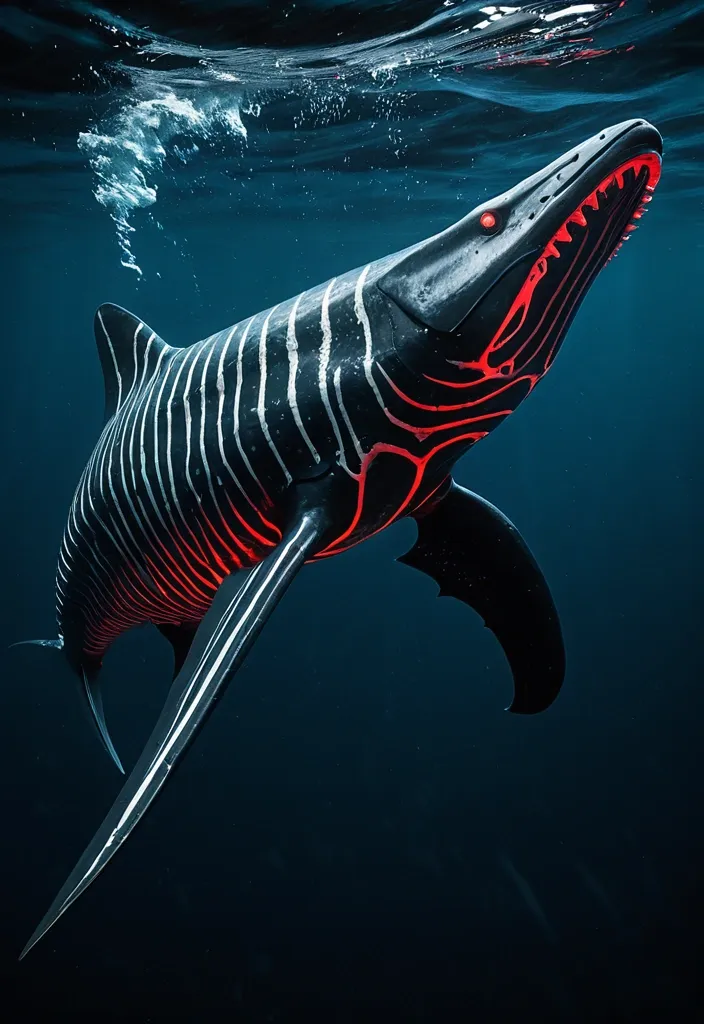
Physical Characteristics: Size & Weight: Between 40 to 60 feet in length , weighing 50 to 75 tons. Coloration: Males: Sleek black base with dark gray tiger stripes accented by subtle red bioluminescent highlights along the stripes , glowing faintly in deep ocean darkness. Females: Larger and more robust with black base and light gray tiger stripes , also featuring red bioluminescent patterns that pulse rhythmically. Body Structure: Hydrodynamic , muscular body combining the streamlined agility of the Shortfin Mako and Black Marlin with the robust power of Predator X and Megalodon. Rigid pectoral fins adapted from Black Marlin , capable of tilting back to reduce drag at high speeds. The tailend is a powerful fluke for propulsion , inspired by Mosasaurus Hoffmannii and Orca anatomy. Thick , overlapping bony scales similar to Arapaima , providing a durable armor that flexes with movement. Limbs: Powerful large flippers adapted for scooting or sliding on land , coated with mucus inspired by the Atlantic hagfish for moisture retention and defense. Capable of limited terrestrial movement , allowing brief excursions out of water. Head & Jaw: Massive jaws with over 40 , 000 PSI bite force , blending Predator X’s mighty jaw strength with the long canine teeth and powerful bite of the Leopard Seal. Flexible skull allowing swallowing of large prey whole. Respiration: Dual respiratory system with both functional lungs and gills , enabling survival from surface to abyssal depths (500 to 9 , 800 feet). Bioluminescence: Red bioluminescent photophores patterned in tiger stripes , used for communication , intimidation , mating displays , and luring prey in the dark ocean depths. Abilities & Traits: Speed & Agility: Capable of bursts up to 82 mph , rivaling the fastest sea creatures like the Black Marlin. Agile hunter using stealth and passive listening , mimicking Transient Killer Whale hunting strategies. Social Structure: Small family groups of three (one male , two females) designed for efficient reproduction and hunting. Males are more streamlined and shorter , optimized for speed and power; females are larger , robust , and agile for endurance and nurturing. Regeneration: Remarkable limb regeneration inspired by axolotl and Crown-of-Thorns starfish , able to regrow lost fins , limbs , and even parts of internal organs. Defense: Venomous spines derived from Crown-of-Thorns starfish line its dorsal ridge , delivering painful venomous wounds to attackers. Mucus coating for defense and moisture retention , also making it slippery and difficult to grasp. Healing: A blubber-like layer similar to dolphins provides insulation , buoyancy , and antimicrobial properties that accelerate healing of wounds. Communication: Uses low-frequency growls , barks , and hisses inspired by saltwater crocodile sounds , combined with bioluminescent signals and stealth vocalizations for hunting. Reproduction: Live births occur at extreme depths (up to 9 , 800 feet) , with offspring adapted to survive in crushing pressures and cold temperatures. Backstory: Created by the Ceno Evail Crossgen Corporation , the Megalosaurus Orca was engineered to dominate marine ecosystems and serve as a living testament to the pinnacle of hybrid dinosaur biotechnology. Designed to combine the raw power of ancient sea predators like Predator X and Megalodon with the intelligence , social hunting , and adaptability of modern marine mammals and fish , this hybrid thrives in the dark , cold depths of the ocean where few predators dare to venture. Their unique physiology allows them to traverse both deep ocean trenches and brief terrestrial environments , making them versatile apex predators. The three known individuals—one male and two females—form a tight-knit family unit , hunting elusive marine mammals and large fish with stealth and precision. Their bioluminescent stripes not only intimidate rivals but also help coordinate complex hunting maneuvers in pitch-black waters. With a lifespan of 100 to 135 years , they are long-lived titans of the sea , their legacy intertwined with the future of marine genetic engineering and the mysteries of oceanic evolution. ,
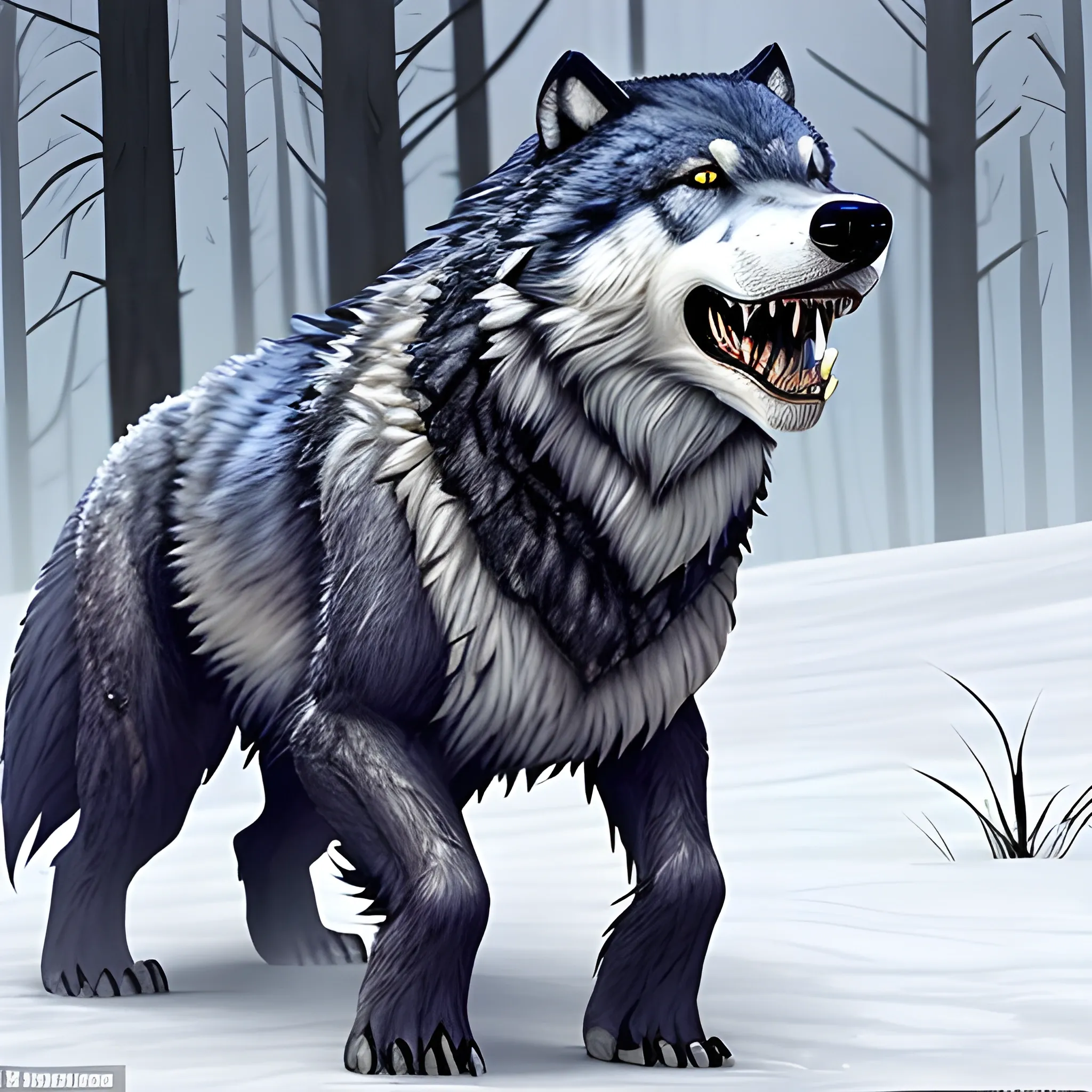
Appearance: The dire wolf is a massive and fearsome creature , closely related to the regular wolf but significantly larger and more imposing. It stands at around 4 to 5 feet tall at the shoulder and can weigh up to 800 pounds or more , dwarfing its smaller cousins. Its fur coat is thick and usually ranges in color from gray to black , providing excellent camouflage in various environments. The dire wolf's powerful jaws and sharp teeth make it a formidable predator in the wild. Features: The dire wolf shares many features with regular wolves but possesses even more enhanced physical capabilities. Its heightened strength , speed , and endurance make it a top-tier predator , capable of taking down large prey with ease. The dire wolf's large , muscular build and powerful limbs give it the advantage of overwhelming its opponents in combat. Habitat: Dire wolves tend to inhabit the wildest and most remote regions of your DND world , far away from civilization. They can be found in dense forests , icy tundras , and even rugged mountainous terrain. As apex predators , they rule over their territories and command respect from other creatures in their domain. Behavior: Like their smaller counterparts , dire wolves are social creatures that often form packs to hunt and survive. They exhibit strong loyalty to their packmates , and the alpha pair leads the group with a mix of intelligence and ferocity. Dire wolves are skilled hunters and work together to bring down formidable prey , such as large mammals and even other monstrous creatures. ,
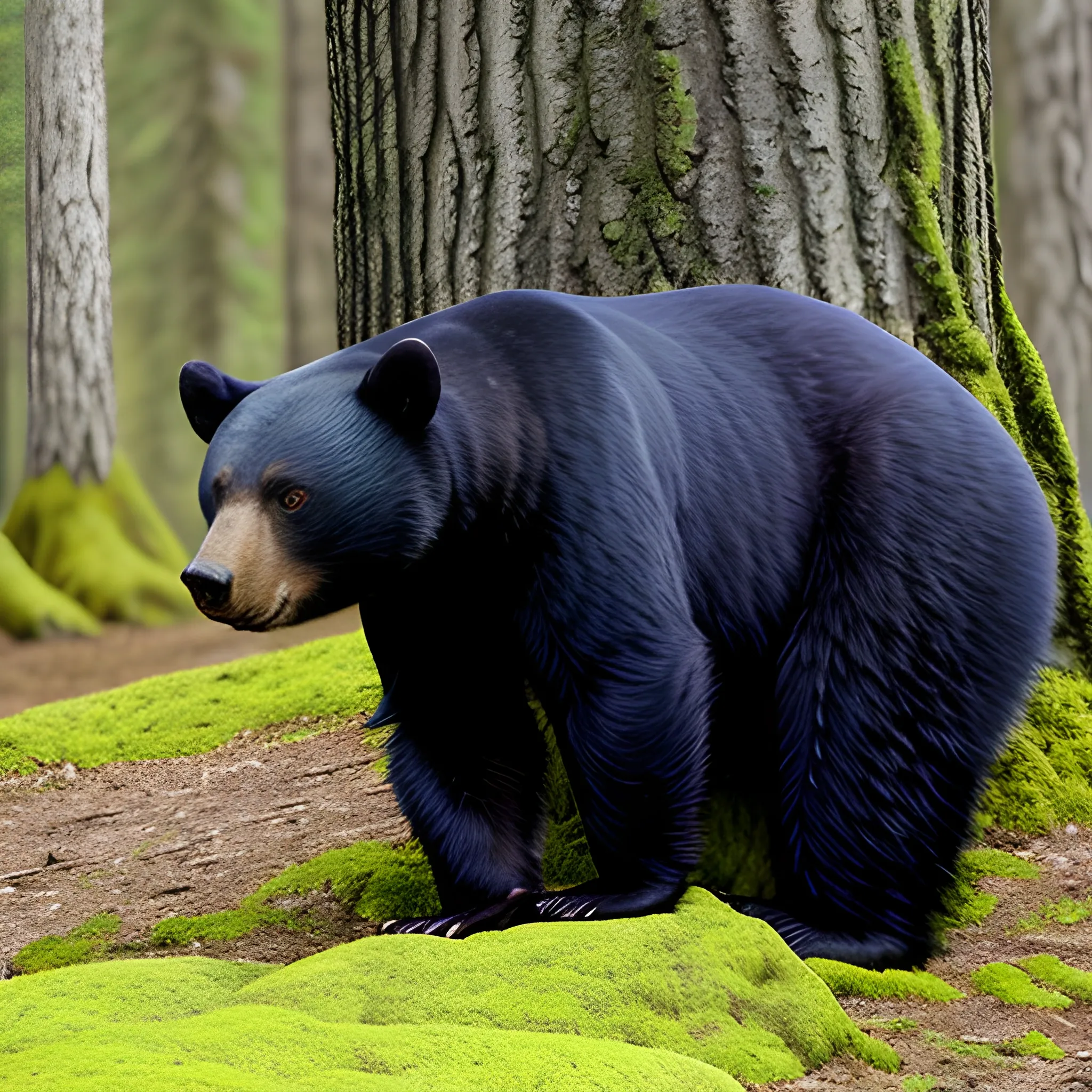
Appearance: The black bear is a large mammal with a sturdy build. Its fur is thick and mostly black , hence its name , although some individuals may have a light-brown muzzle or a small white patch on their chest. The fur is soft to the touch , providing excellent insulation during colder seasons. Adult black bears typically stand around 5 to 7 feet tall when on their hind legs and can weigh anywhere between 200 to 600 pounds , with males being larger than females. Features: The black bear has a distinctive humped back , which is a result of powerful muscles that enable them to dig and climb with ease. Their shoulders are well-developed , and their front paws have sharp claws , which they use for digging and climbing trees. Their strong jaws are equipped with sharp teeth , allowing them to consume various foods , including fruits , nuts , insects , and small animals. Despite their name , black bears can come in various shades of brown and cinnamon , but their fur generally appears dark from a distance. Habitat: Black bears are highly adaptable creatures and can be found in a range of habitats , including dense forests , mountainous regions , swamps , and even arid scrublands. They tend to favor areas with ample food sources , such as berries , nuts , and smaller mammals. In your DND world , they could inhabit ancient forests or remote wilderness areas , sometimes sharing territories with other woodland creatures. Behavior: Black bears are generally solitary animals , with the exception of mothers with their cubs. They are omnivorous , meaning they eat both plant matter and meat , but they are not typically aggressive unless provoked or threatened. They are skilled climbers , often seeking refuge in trees to avoid danger or to rest. During colder months , black bears may hibernate , using their stored fat reserves to survive the winter. Role in the World: In your DND world , black bears could play various roles , serving as guardians of certain areas , or sometimes appearing as natural obstacles for adventurers traveling through the wilderness. Druids and rangers might have a special connection with these majestic creatures , and they could be revered as symbols of strength , endurance , and adaptability. Encountering a black bear in the wild could offer opportunities for non-combat interactions , such as avoiding the creature by using stealth or calming it through the use of animal handling skills. However , if threatened or cornered , black bears could defend themselves fiercely , making them a potential challenge for adventurers who aren't careful in their approach. ,
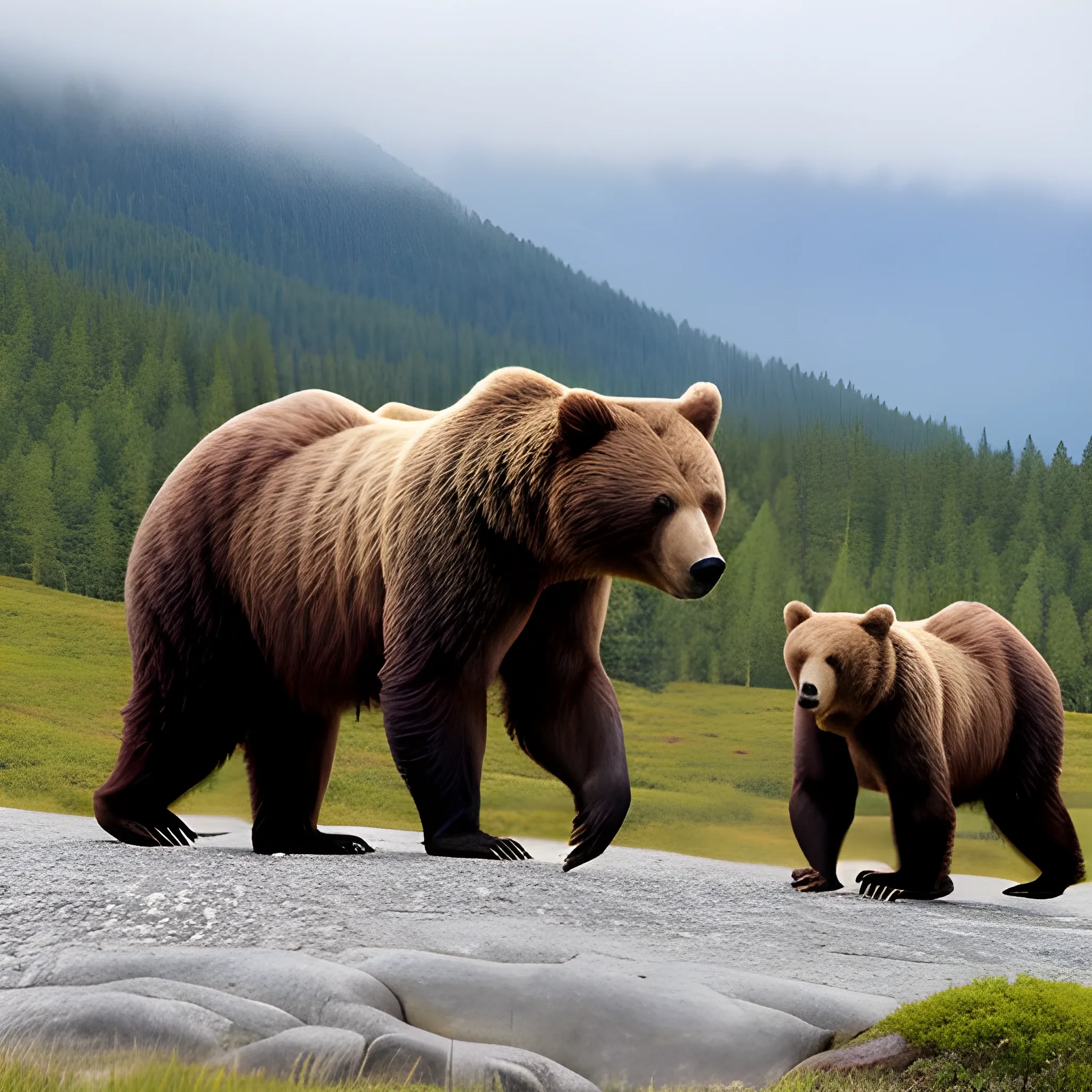
Appearance: The brown bear is a large and powerful creature , often considered the embodiment of strength and ferocity. It has a distinctive hump of muscle on its shoulders , which sets it apart from other bear species. Despite its name , the brown bear's fur can vary significantly in color , ranging from light brown to dark brown , and even shades of blonde or reddish-brown. Some individuals may have a lighter-colored face , creating a "grizzled" appearance , while others have a more uniform coloration throughout their body. Features: Brown bears are well-adapted for survival in various environments. They have strong limbs with sharp claws , which they use for digging , climbing , and catching prey. Their jaws are equipped with formidable teeth that can crush bones and tear through flesh. Adult brown bears can stand around 6 to 10 feet tall when on their hind legs , and their weight ranges from 400 to 1 , 500 pounds , with males being significantly larger than females. Habitat: Brown bears are versatile creatures , capable of inhabiting a wide range of habitats. They can be found in dense forests , grasslands , tundra , and mountainous regions. In your DND world , they might be common inhabitants of rugged wilderness areas , guarding their territories and foraging for food. Behavior: Brown bears are generally solitary animals , except during the breeding season or when a mother is caring for her cubs. They are omnivorous , having a diverse diet that includes berries , fruits , fish , insects , small mammals , and even carrion. Their intelligence and resourcefulness enable them to adapt to different food sources based on the season and availability. Role in the World: In your DND world , brown bears could play a significant role in the ecosystem. They might be seen as the apex predators of certain regions , balancing the population of prey animals and ensuring the health of the natural environment. Druids and rangers could have a special connection with brown bears , viewing them as symbols of the wild and protectors of nature. Encountering a brown bear in the wilderness could be a thrilling and potentially dangerous experience for adventurers. These formidable creatures are generally not aggressive toward humans , but they may become defensive if they feel threatened or if their territory is encroached upon. Adventurers might have opportunities to peacefully observe brown bears from a distance or use animal handling skills to avoid conflict. However , provoking or attacking a brown bear could lead to a fierce and challenging battle , as they are capable of inflicting significant damage with their powerful claws and jaws. ,


